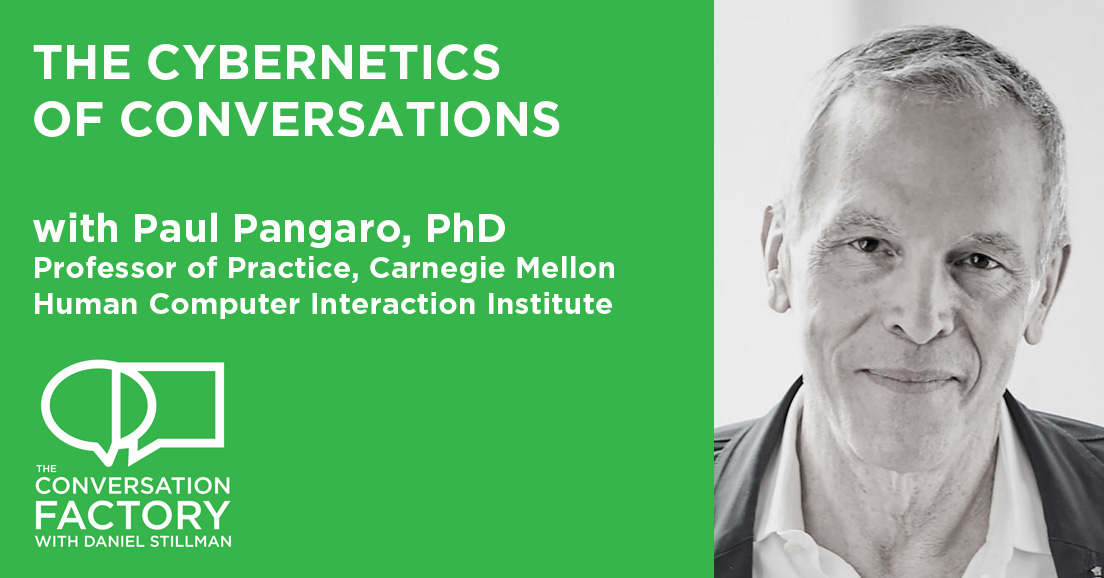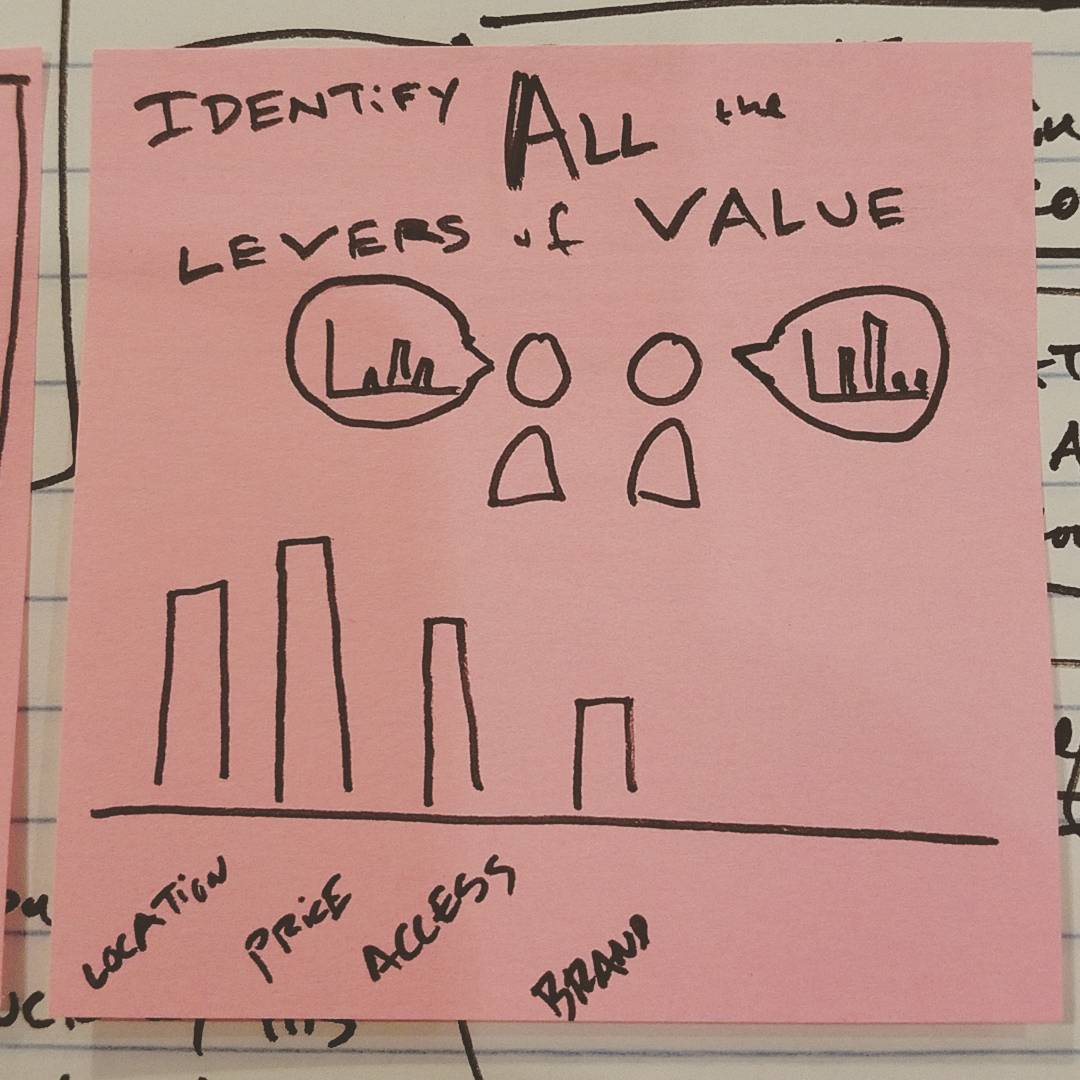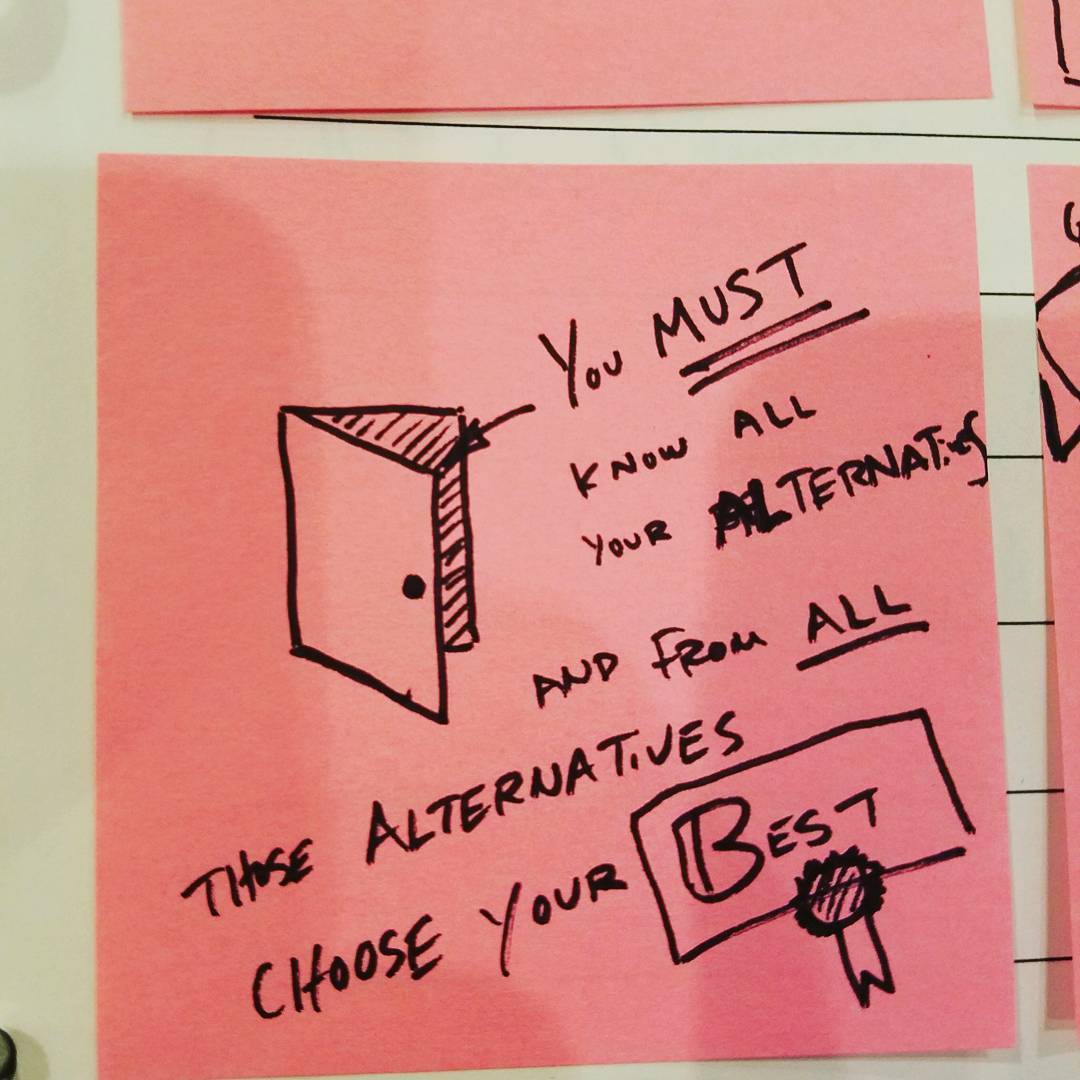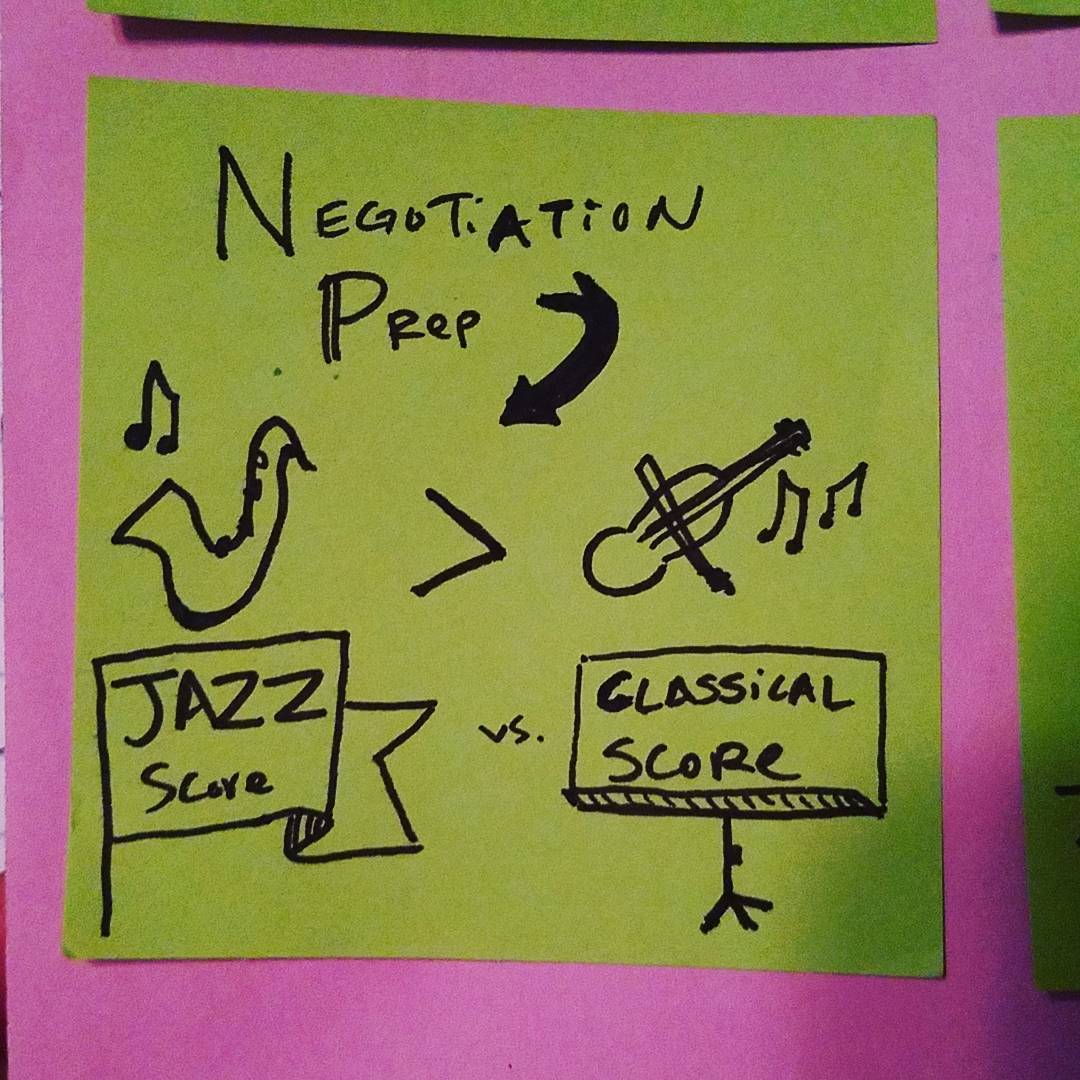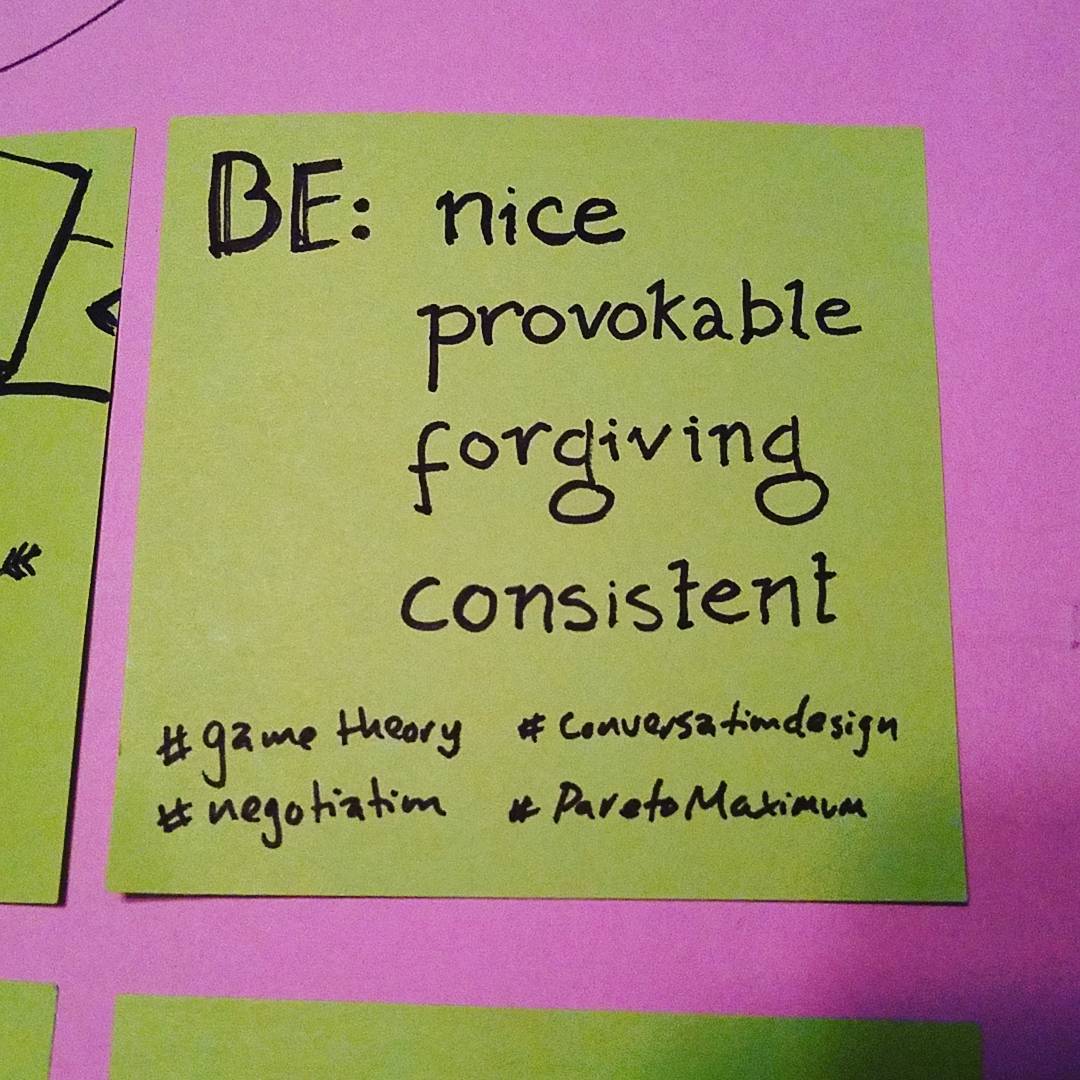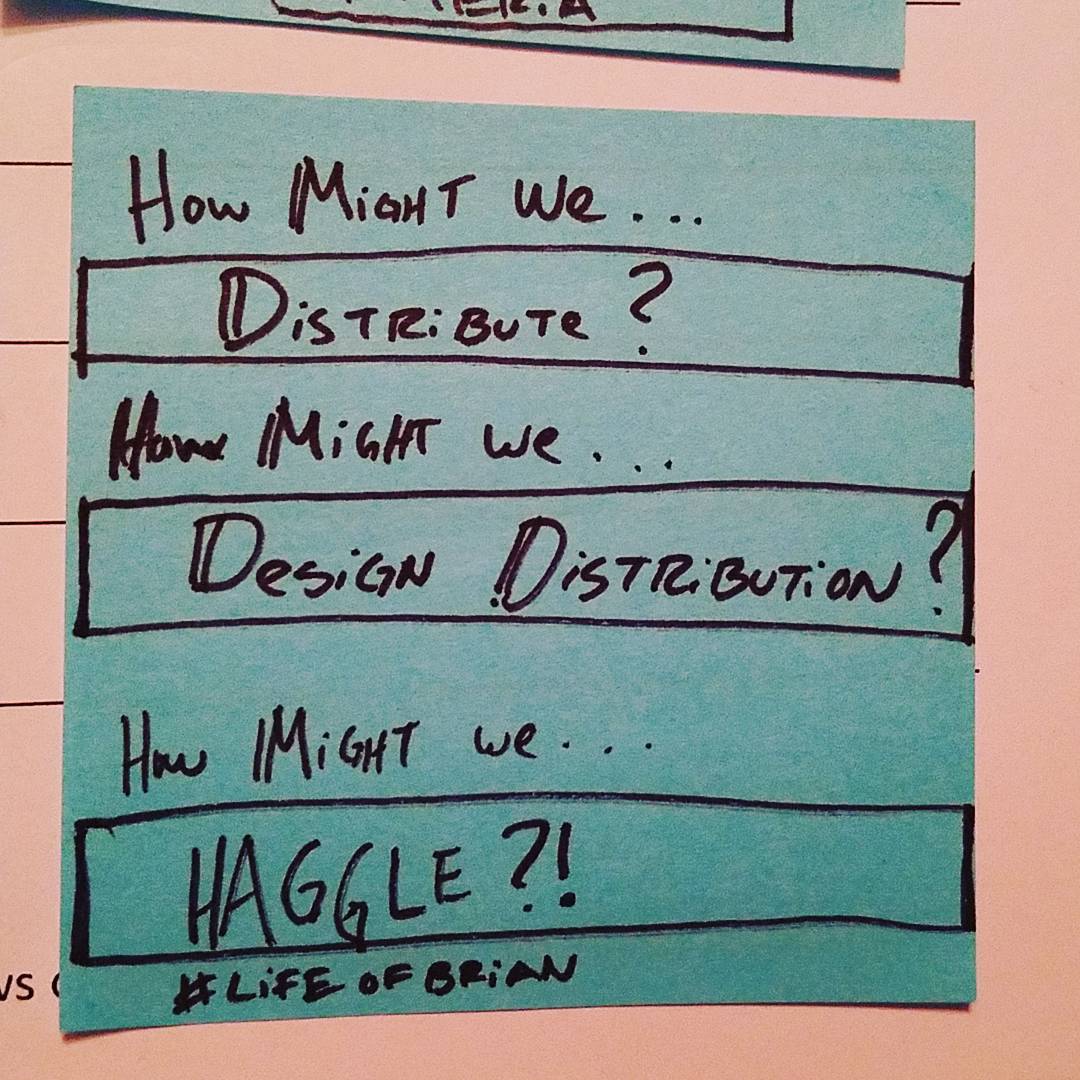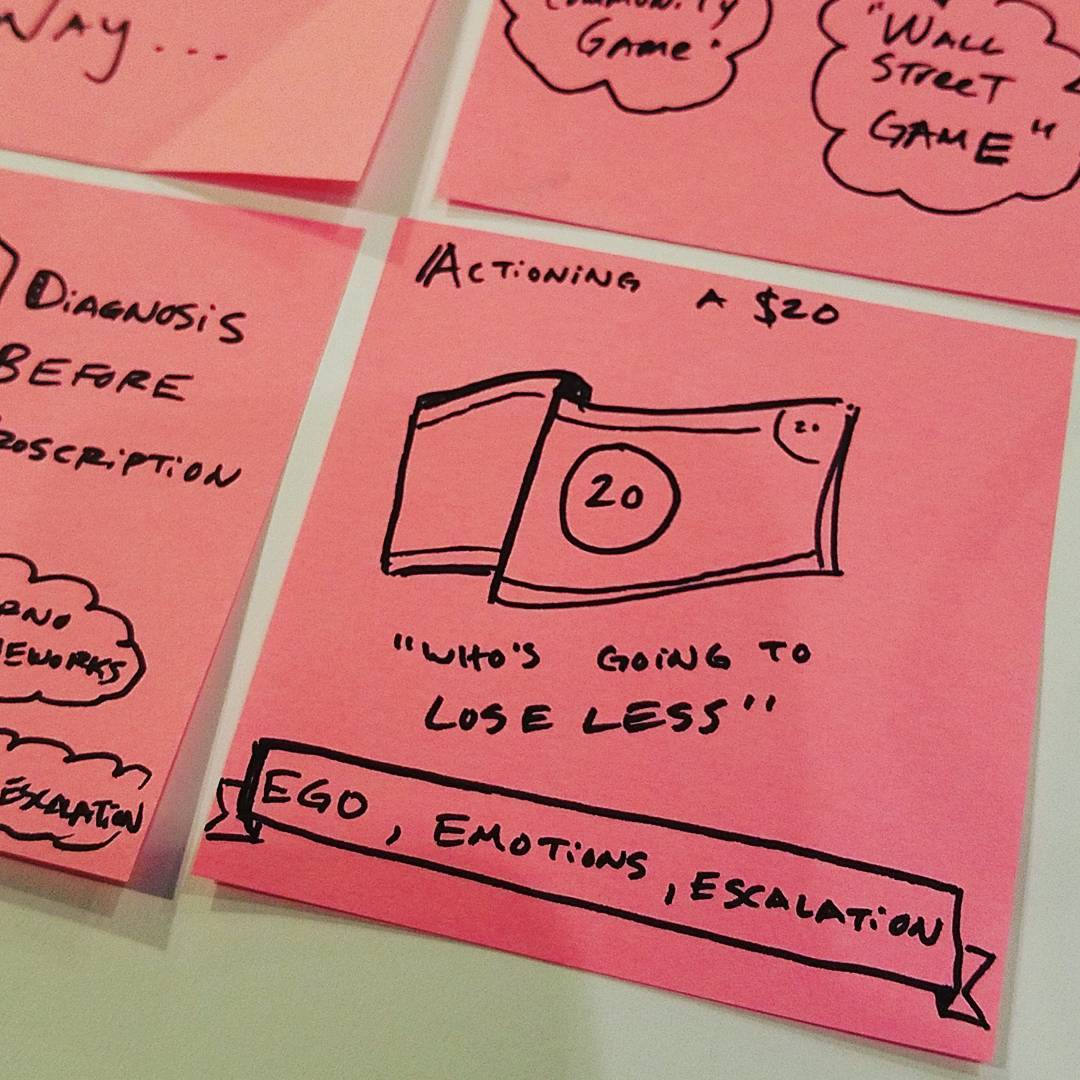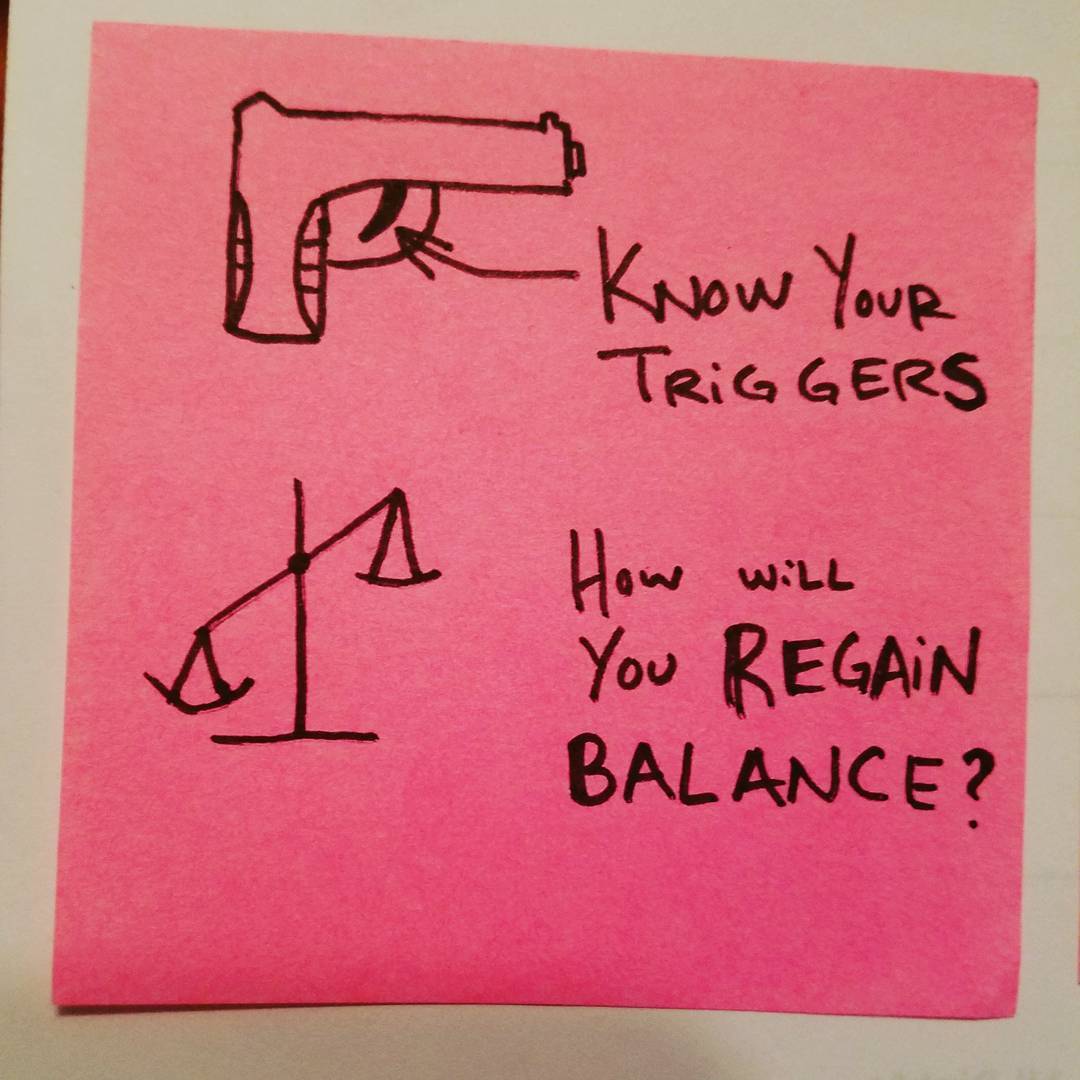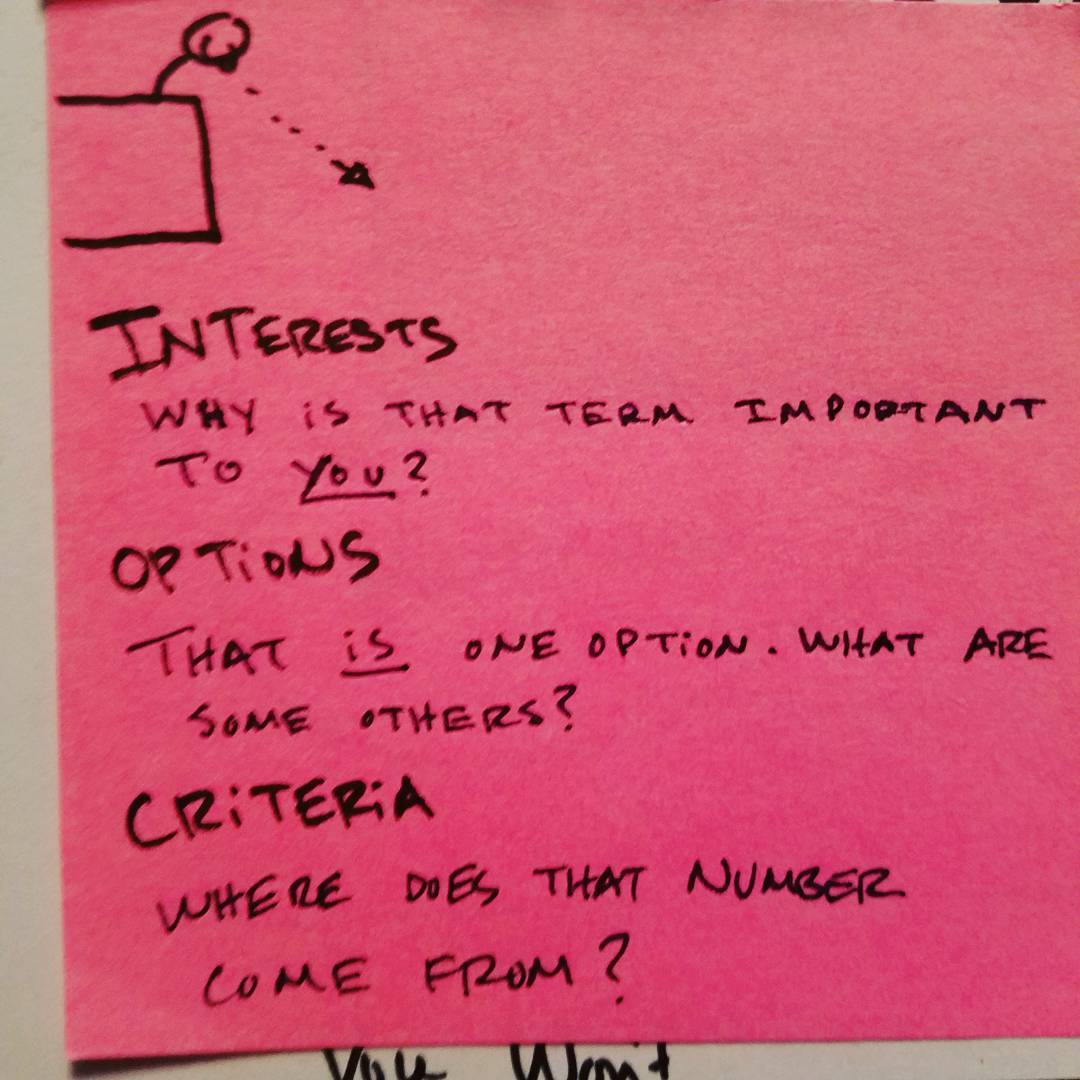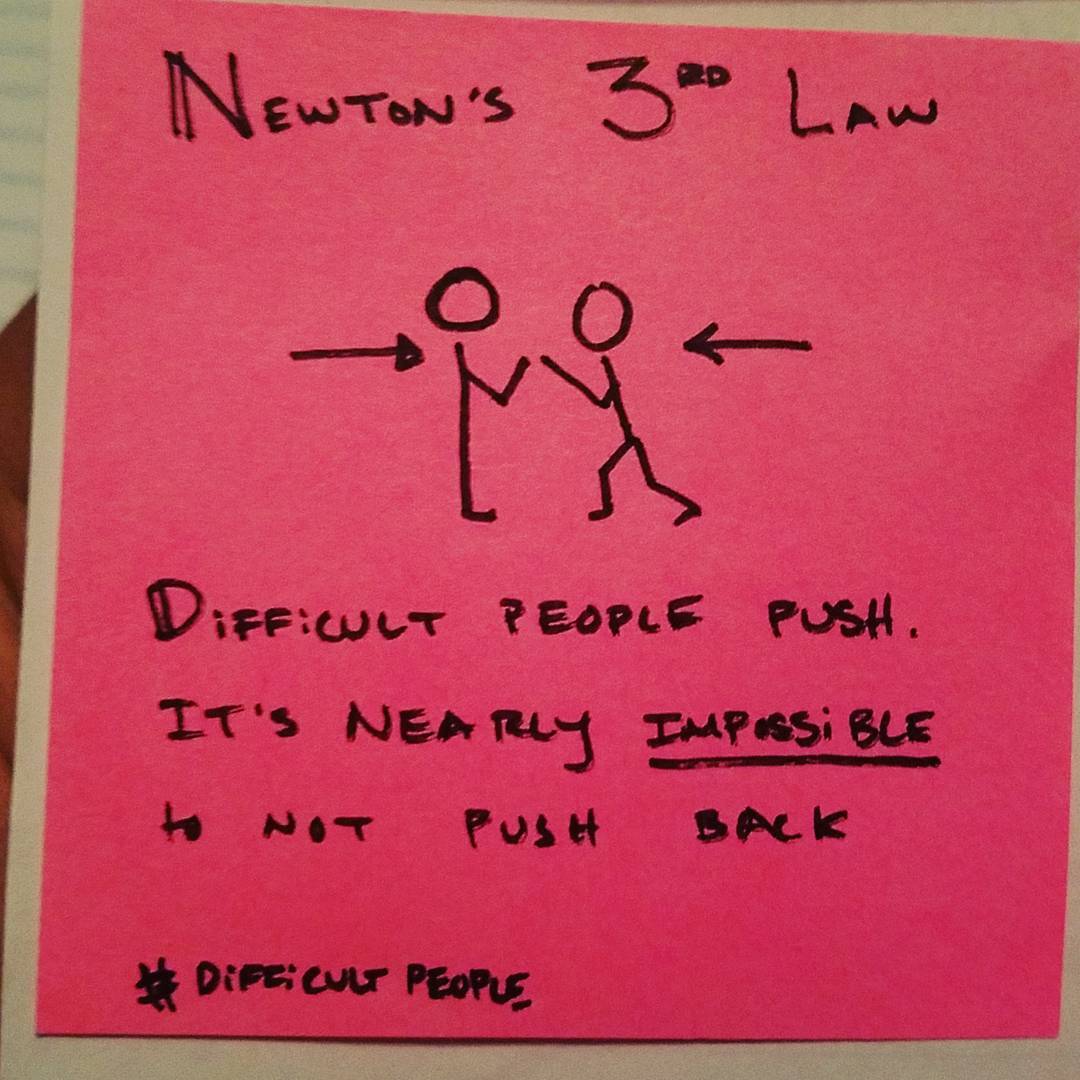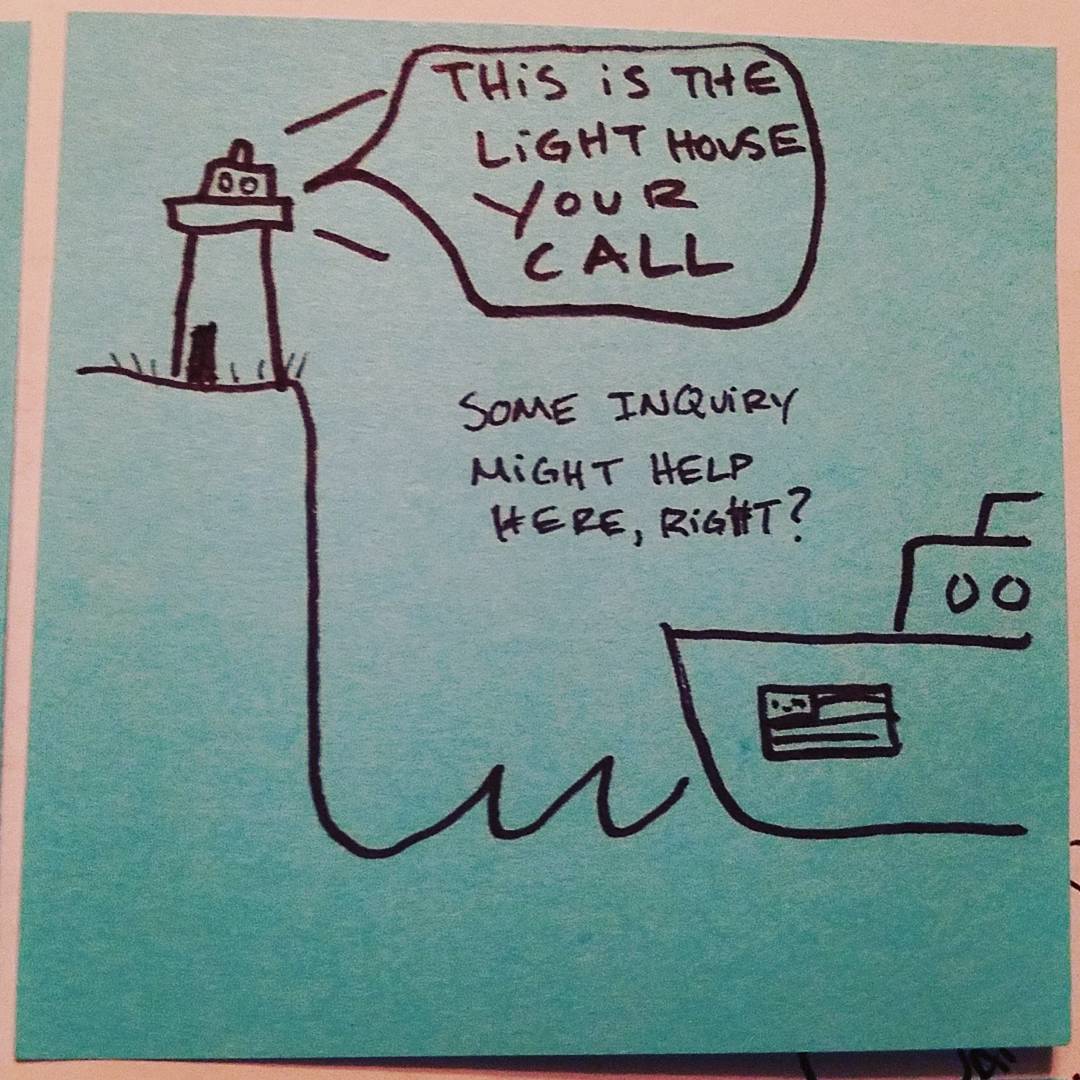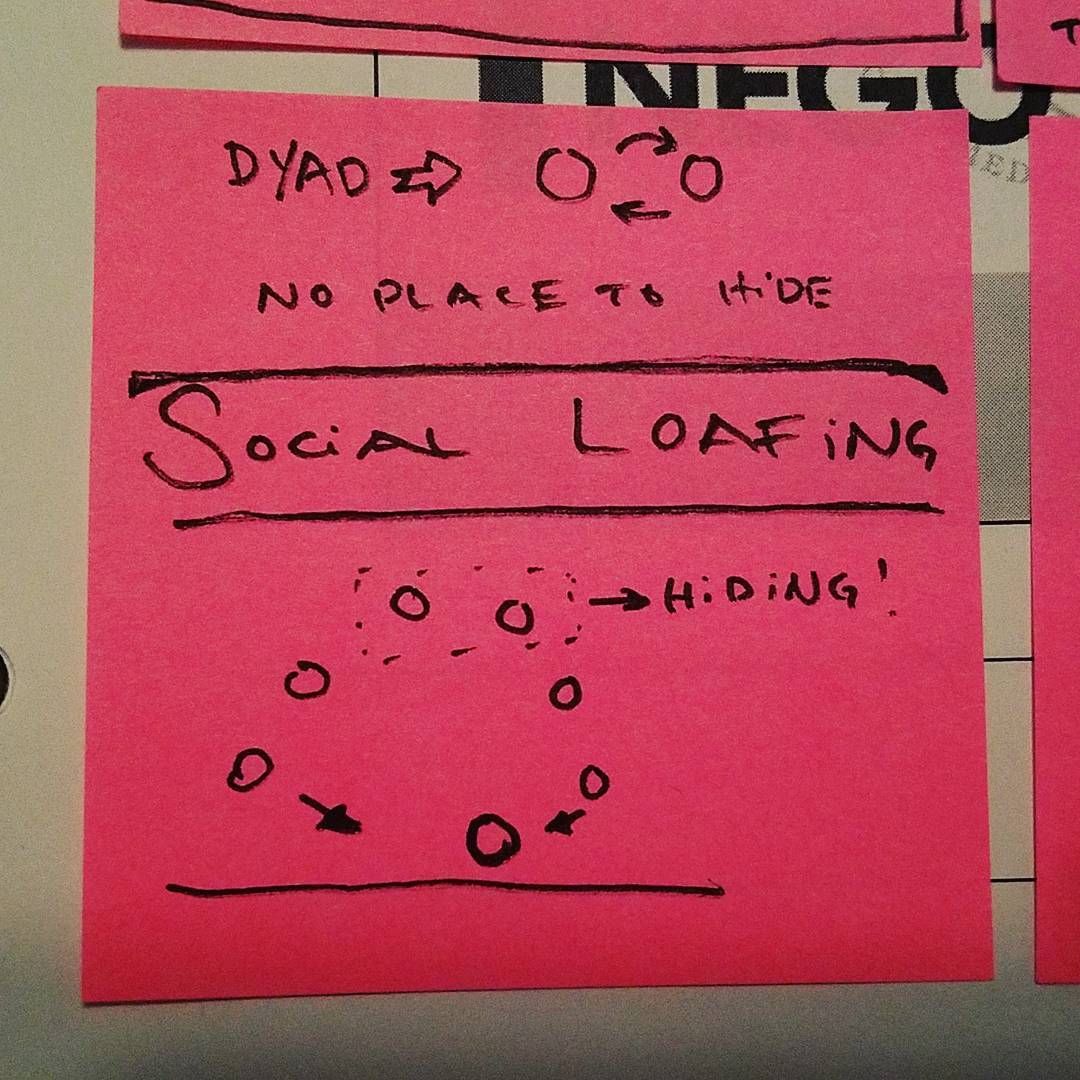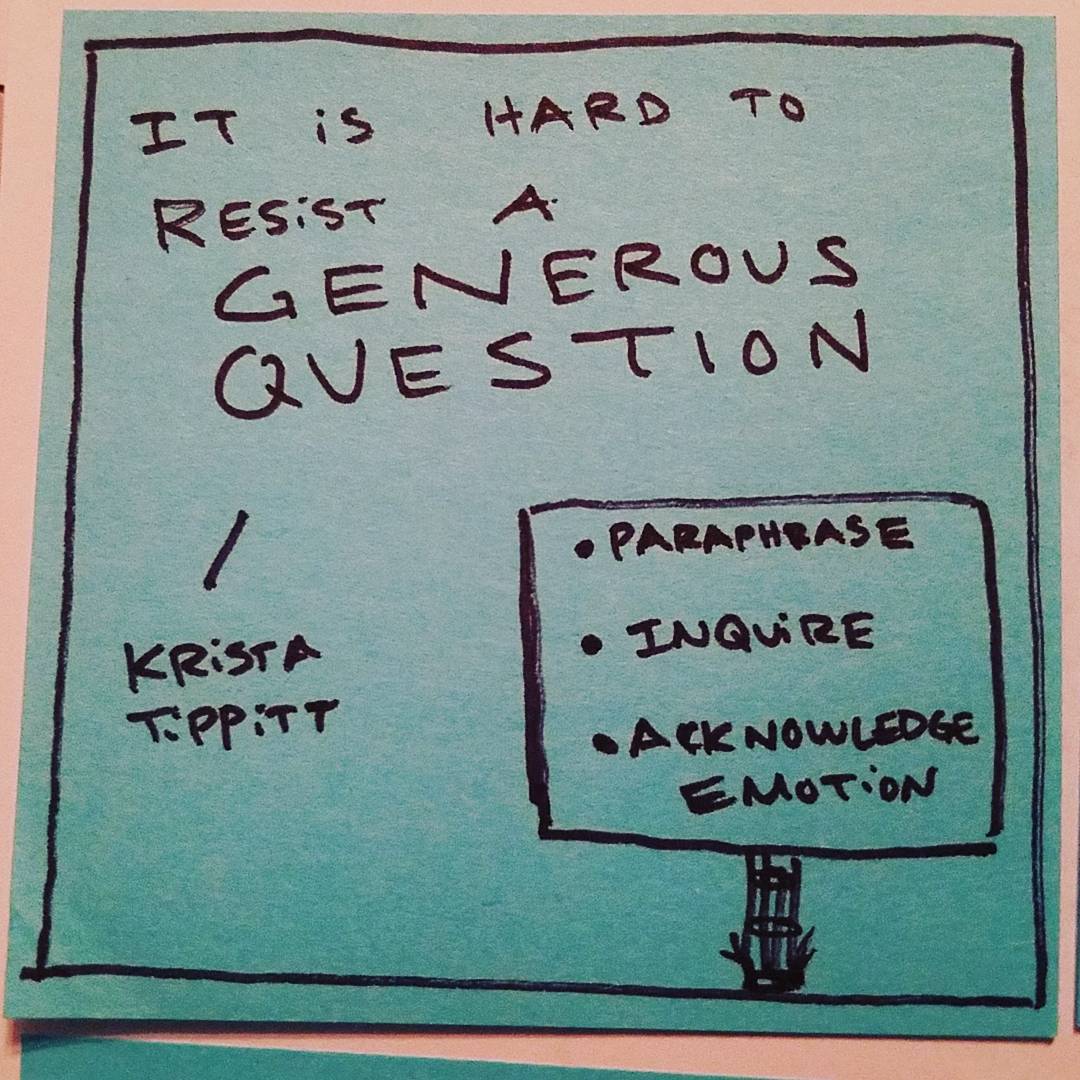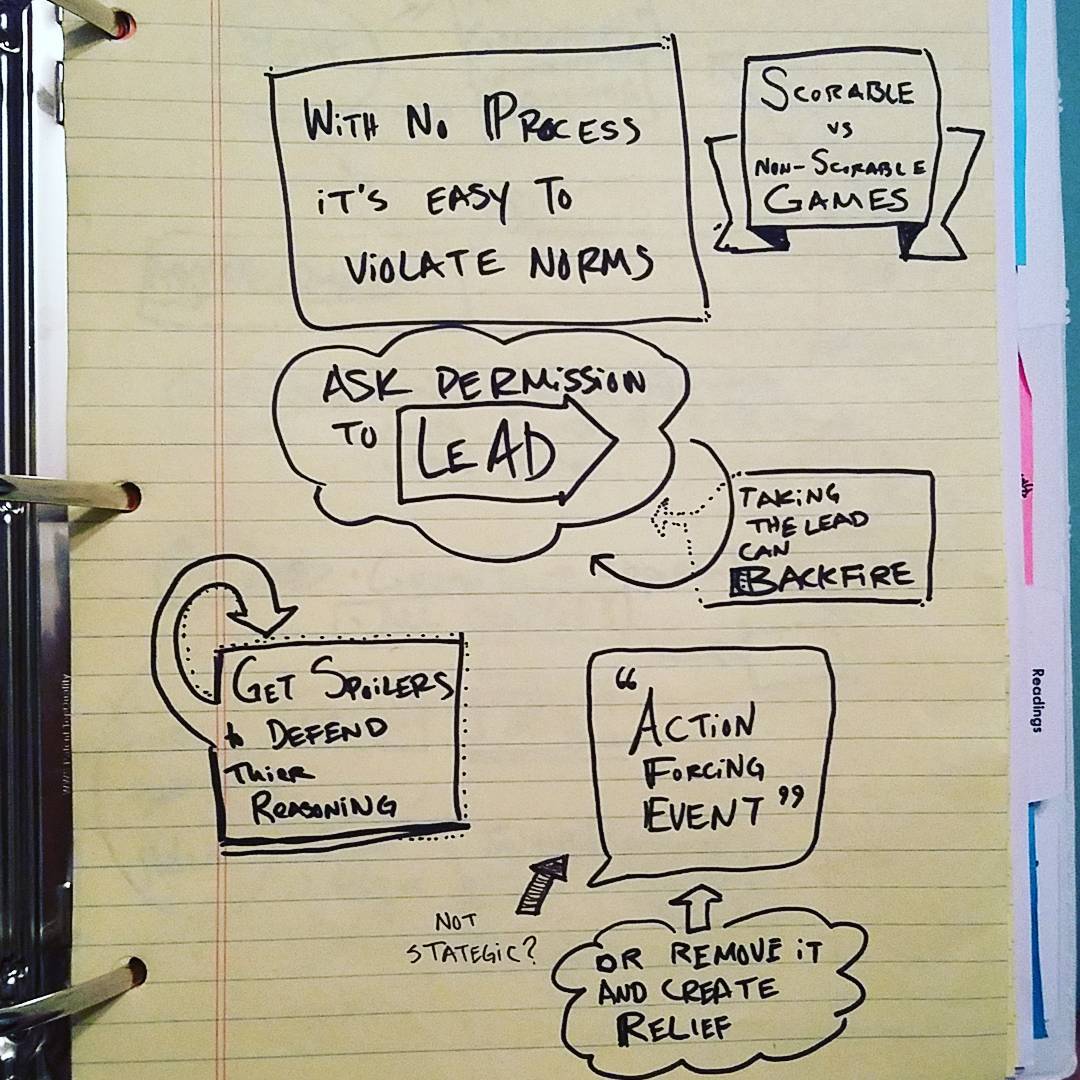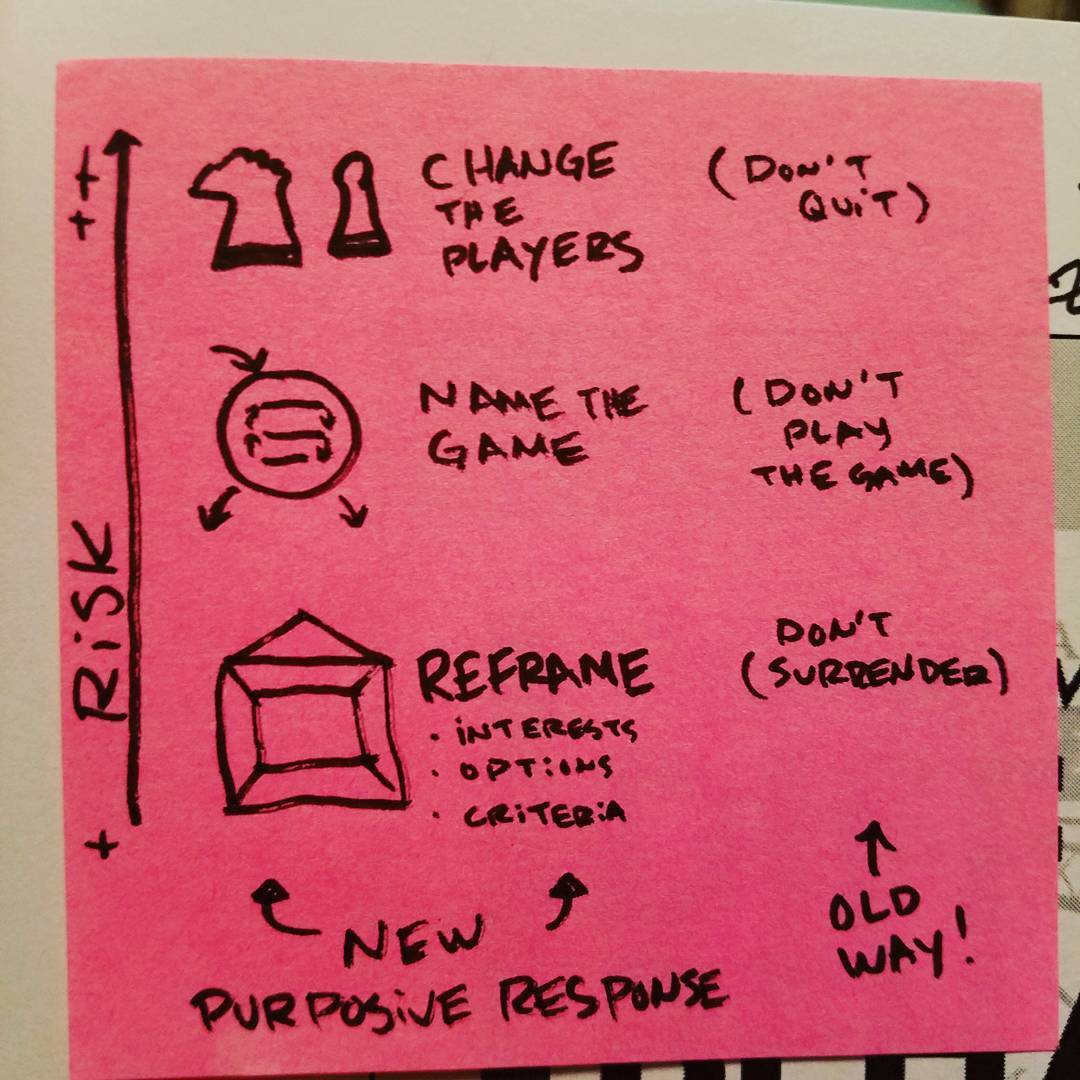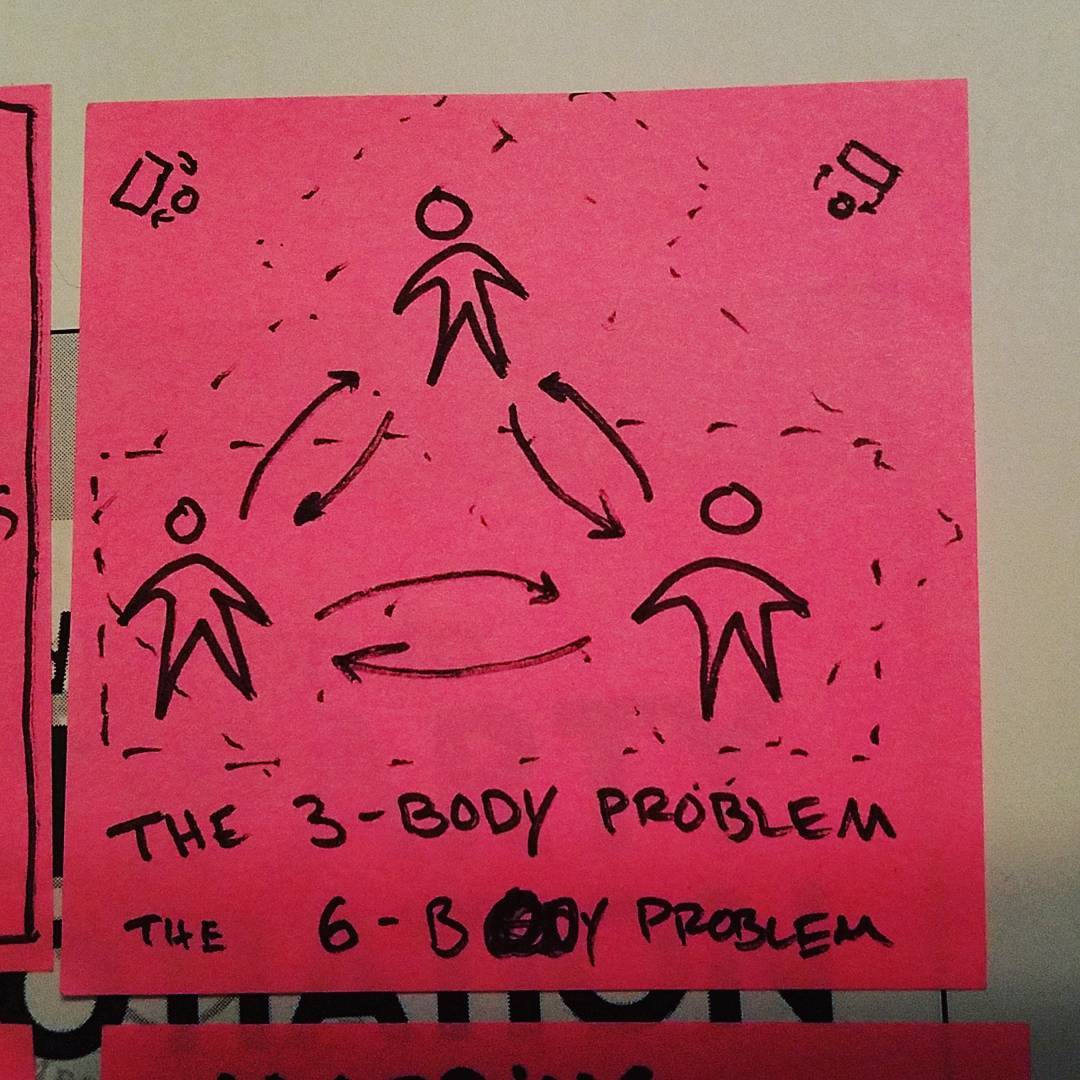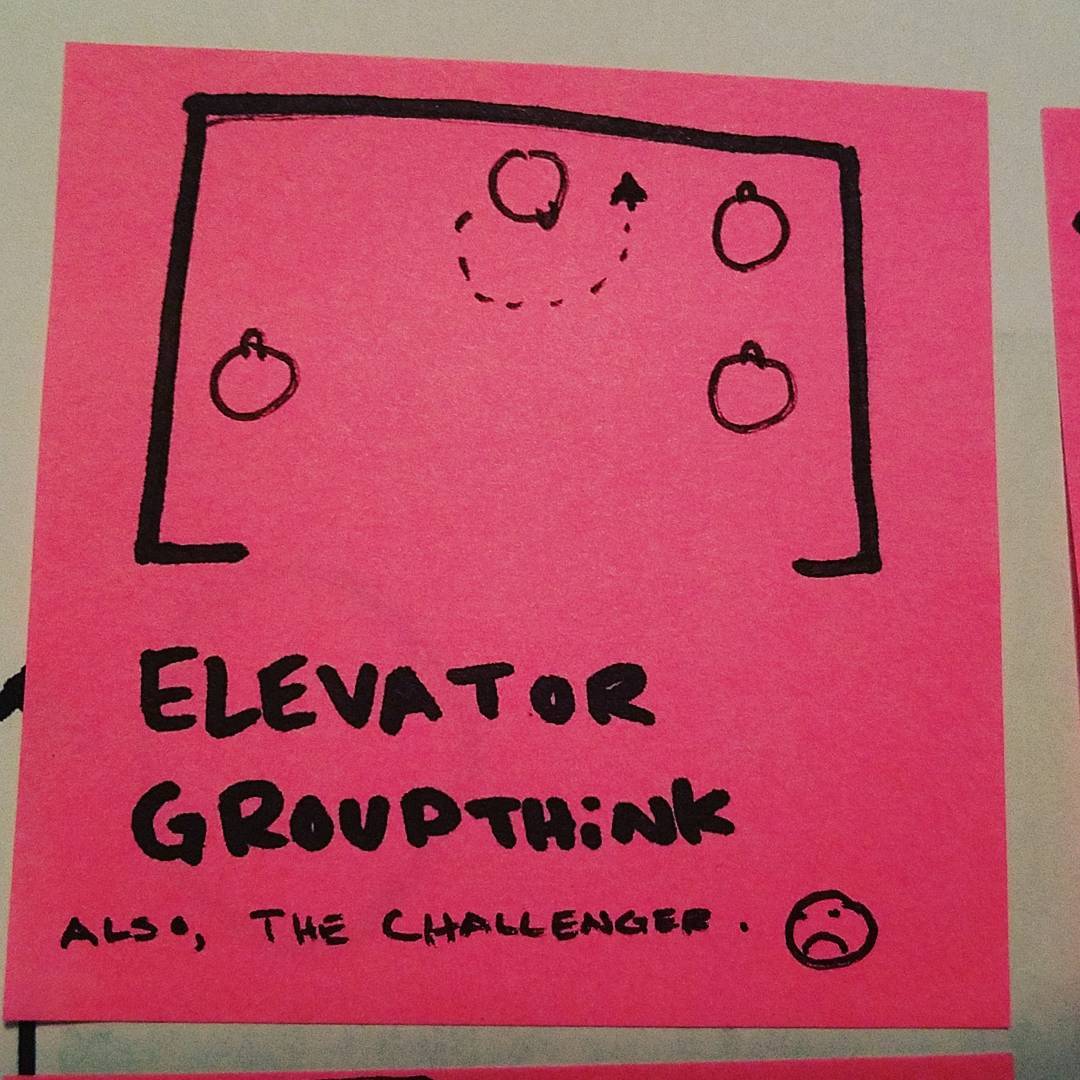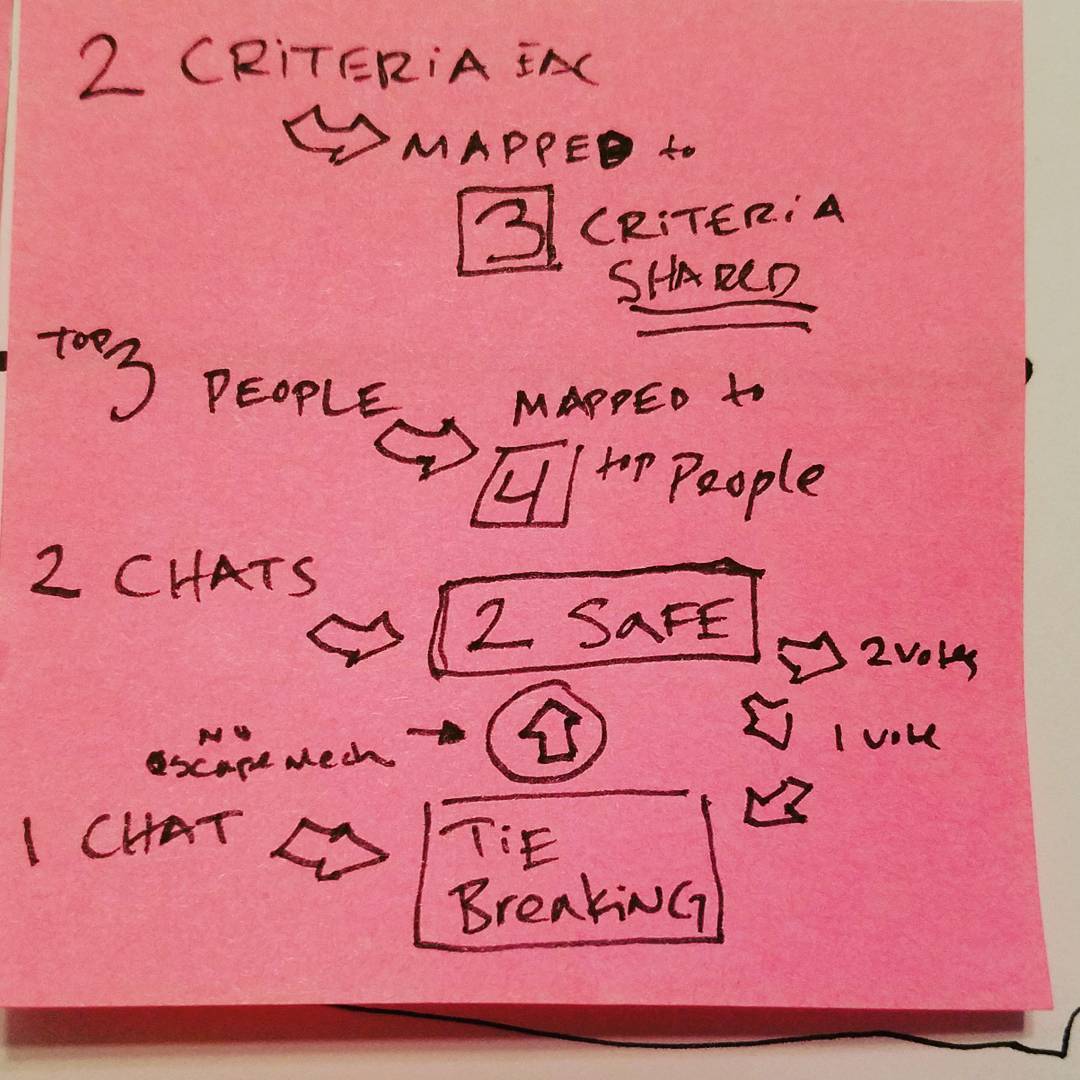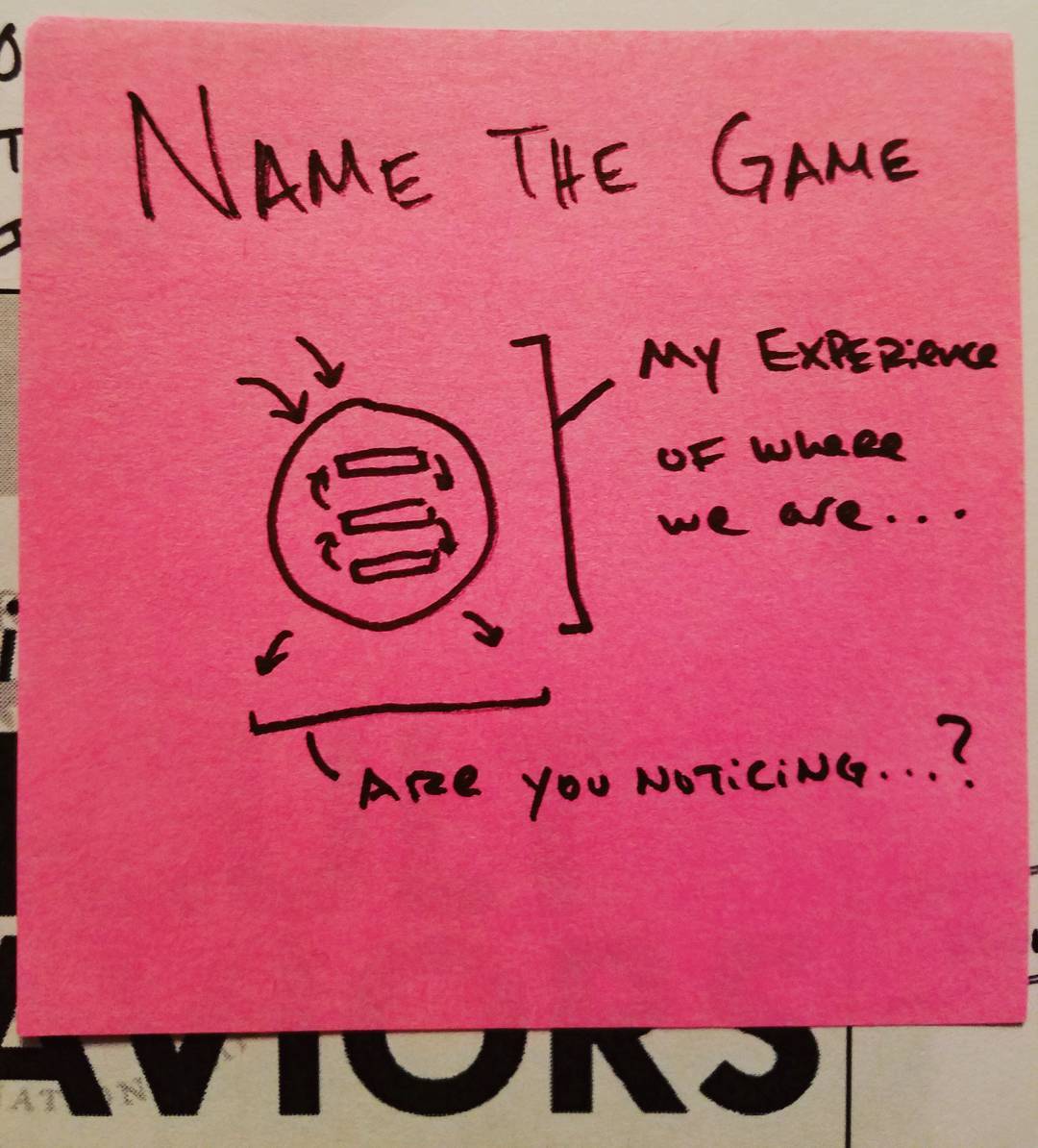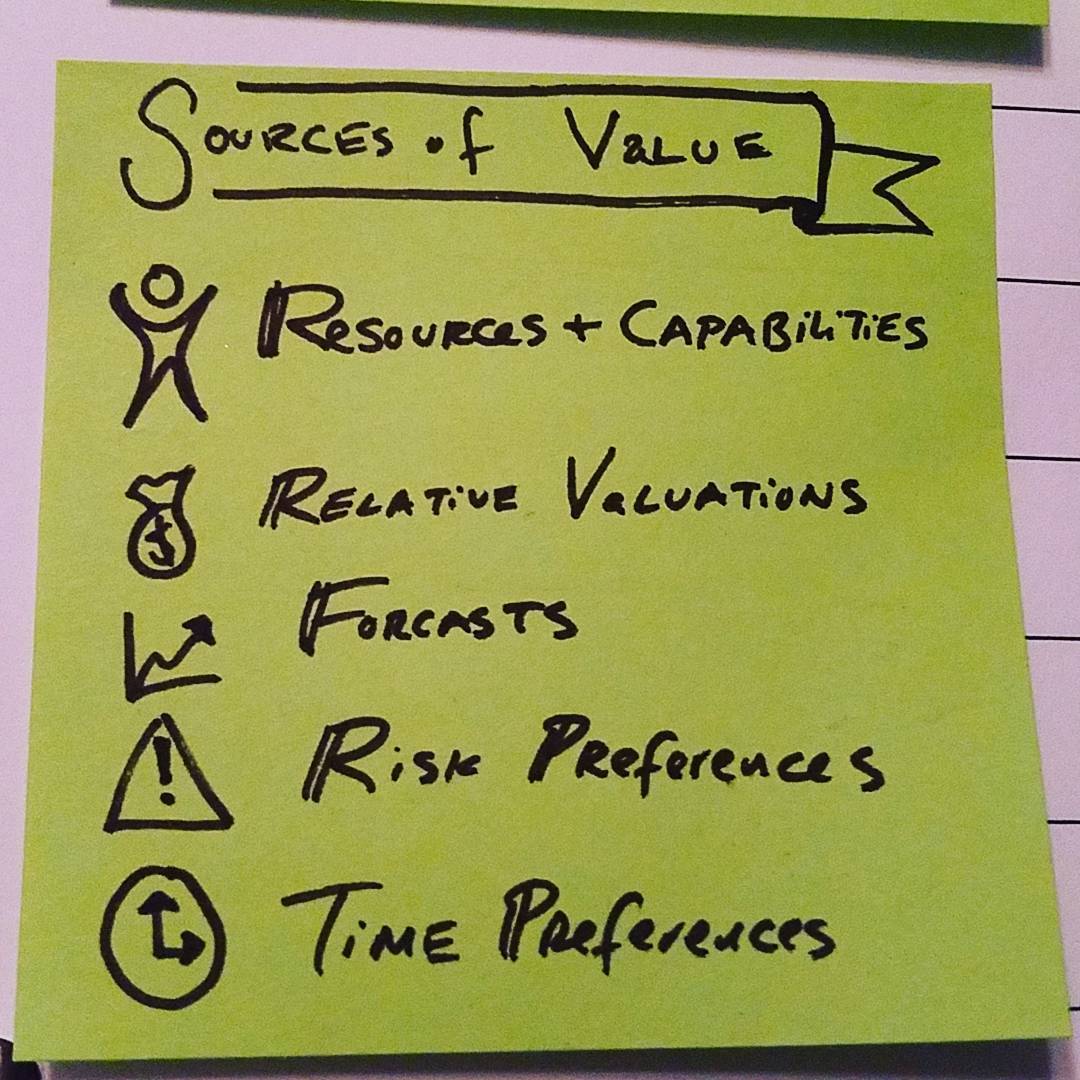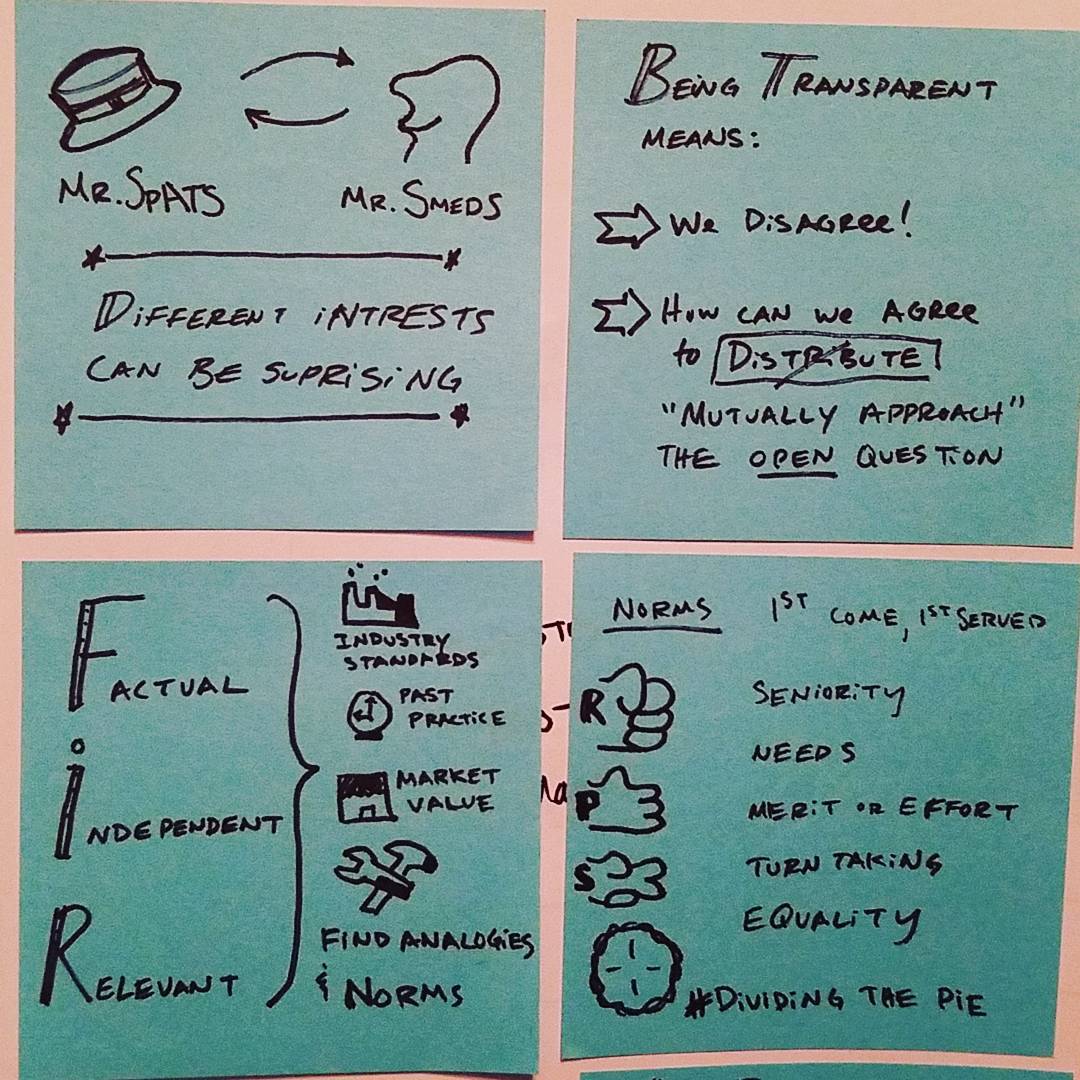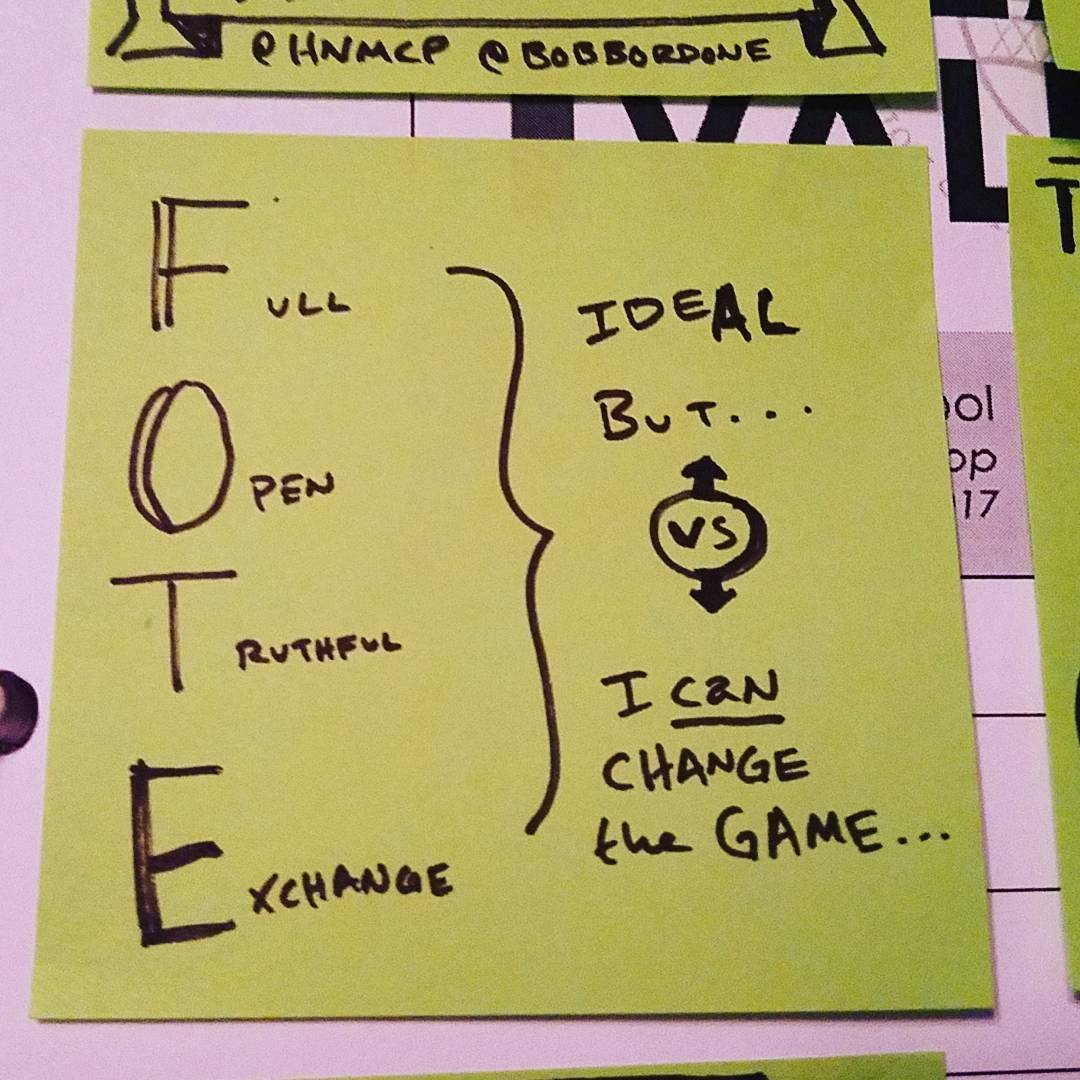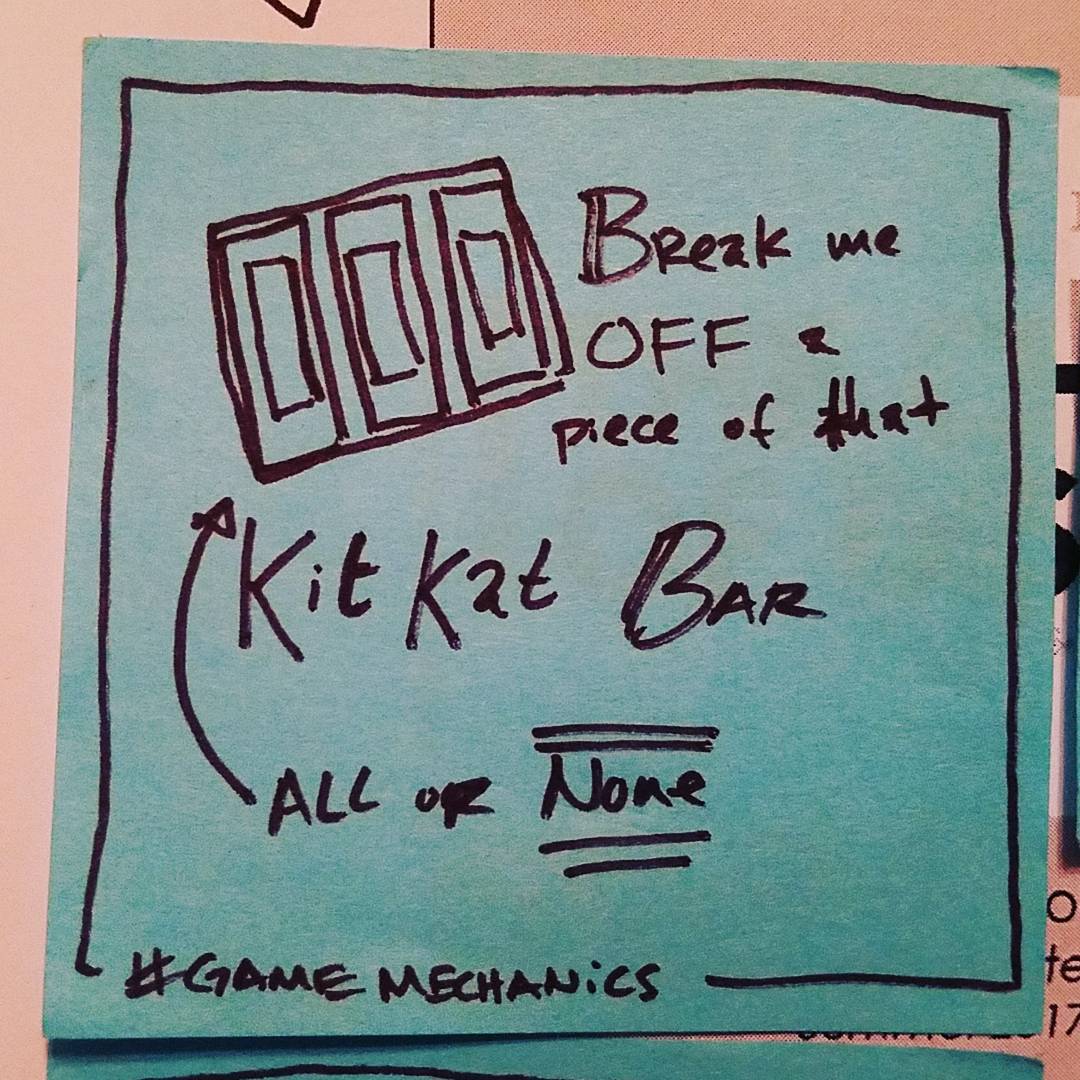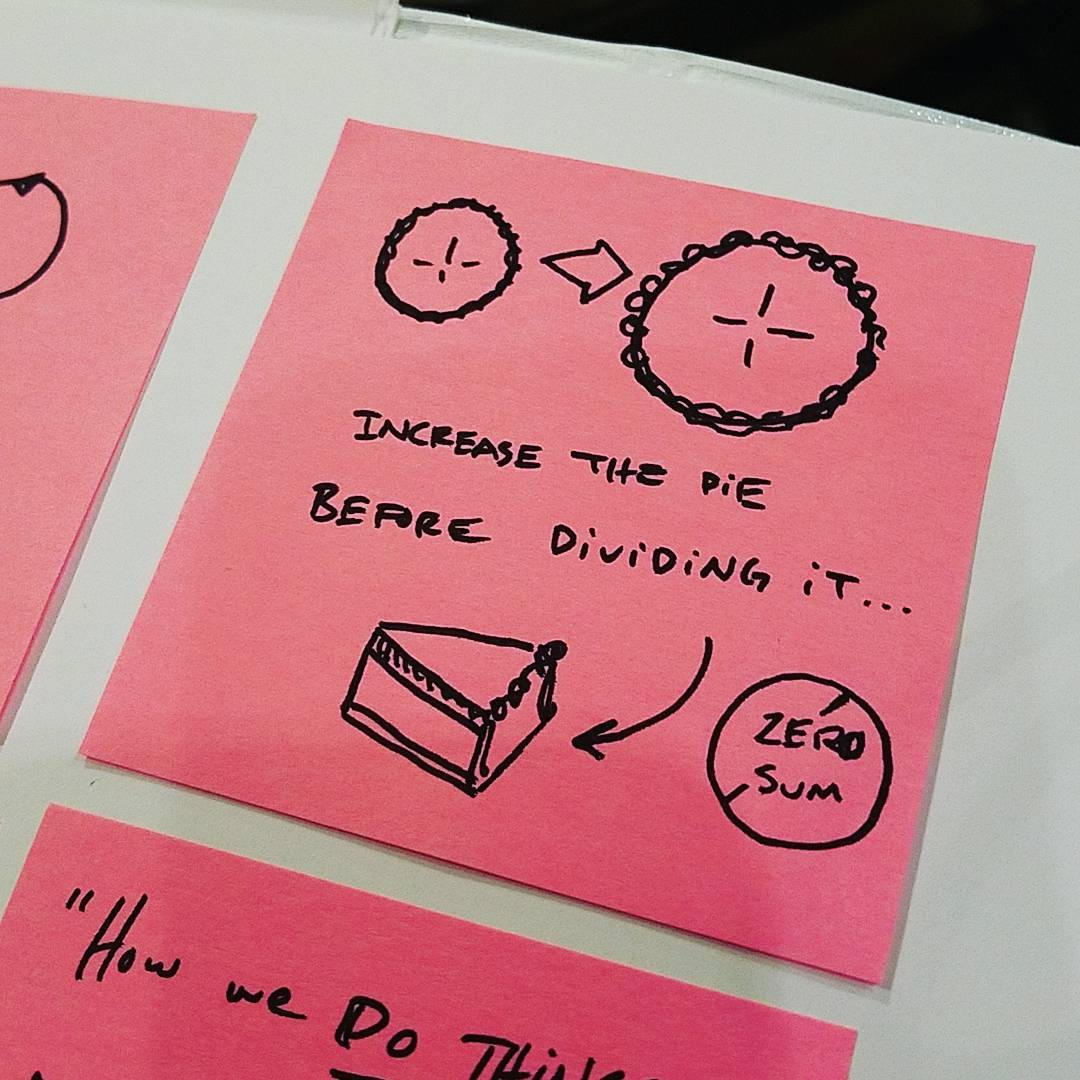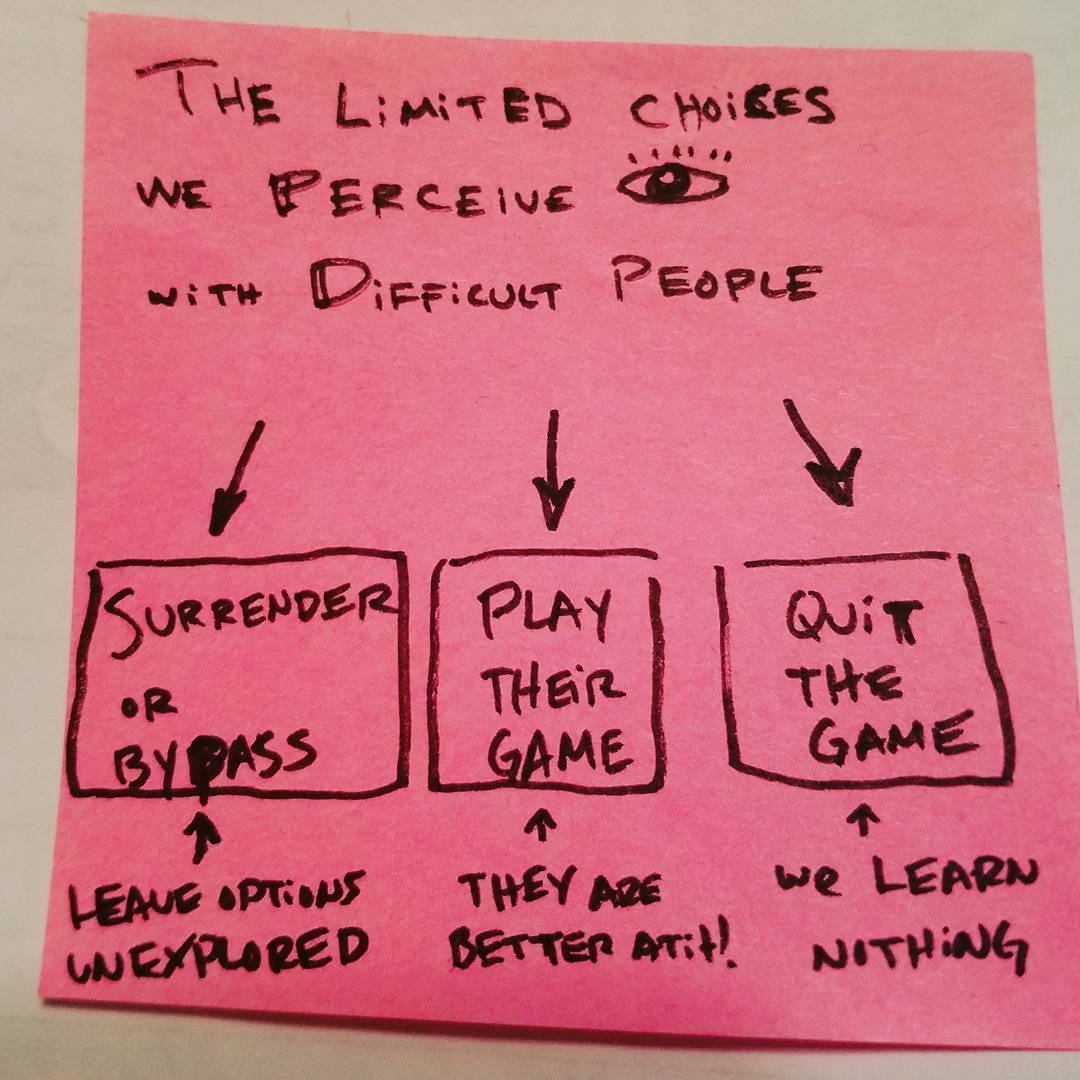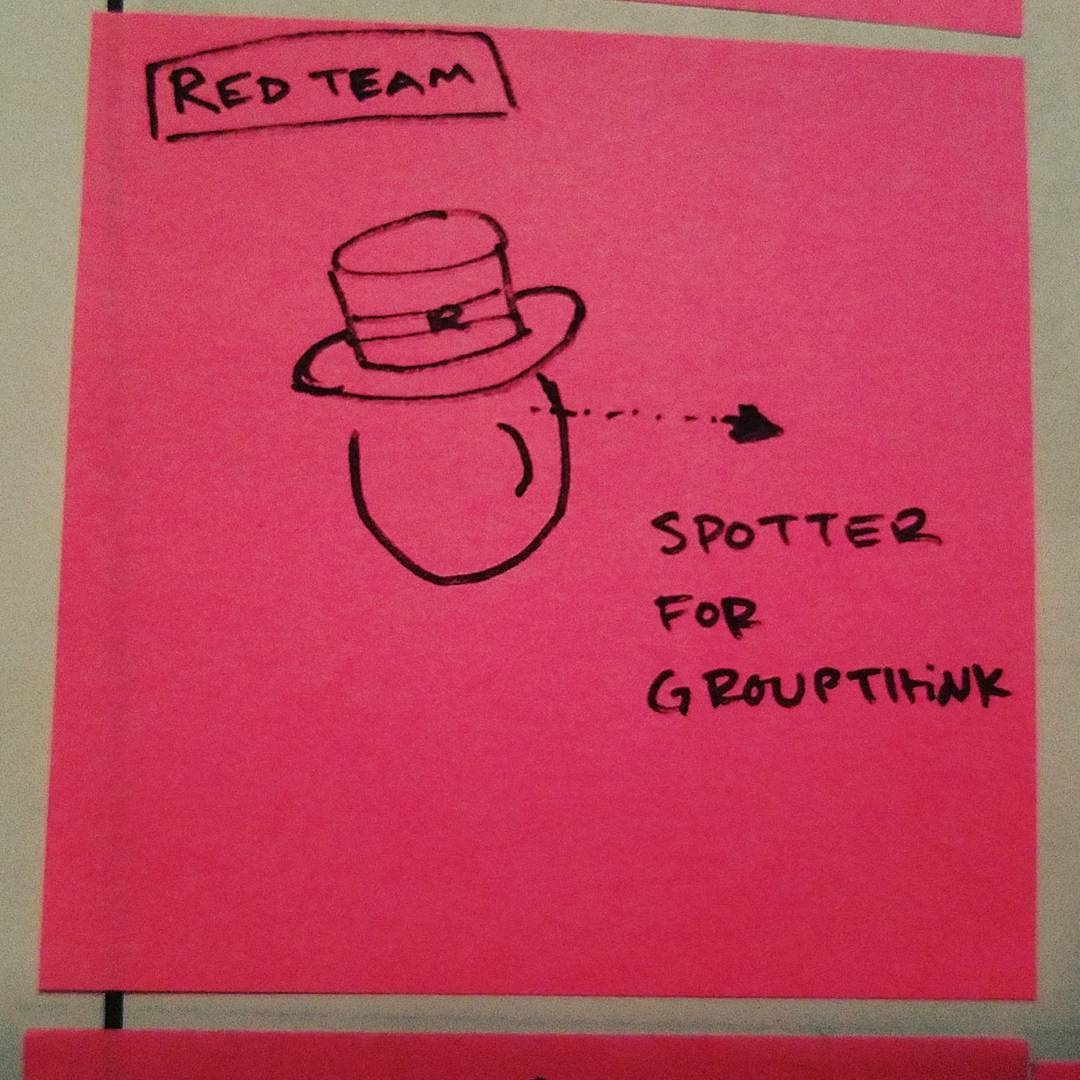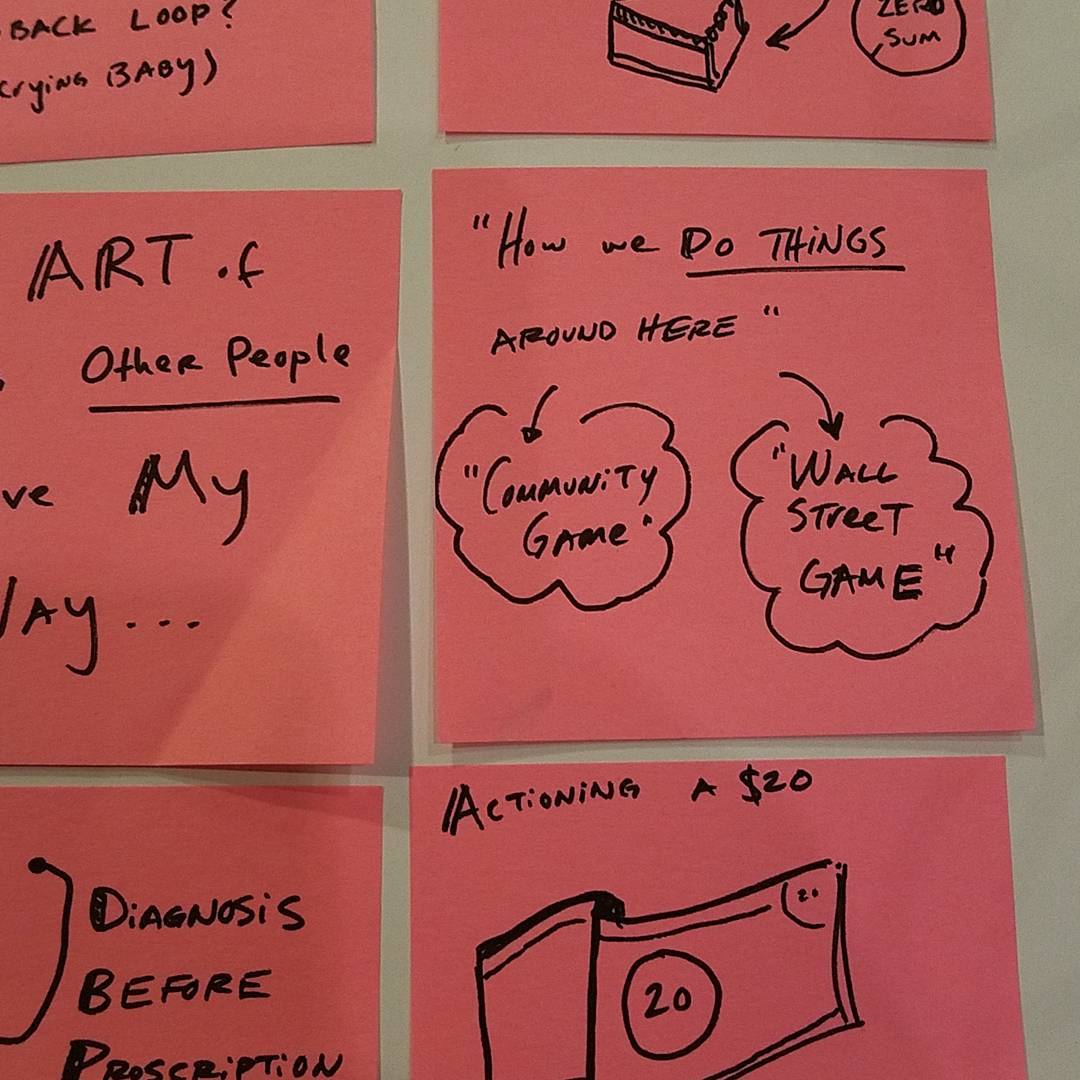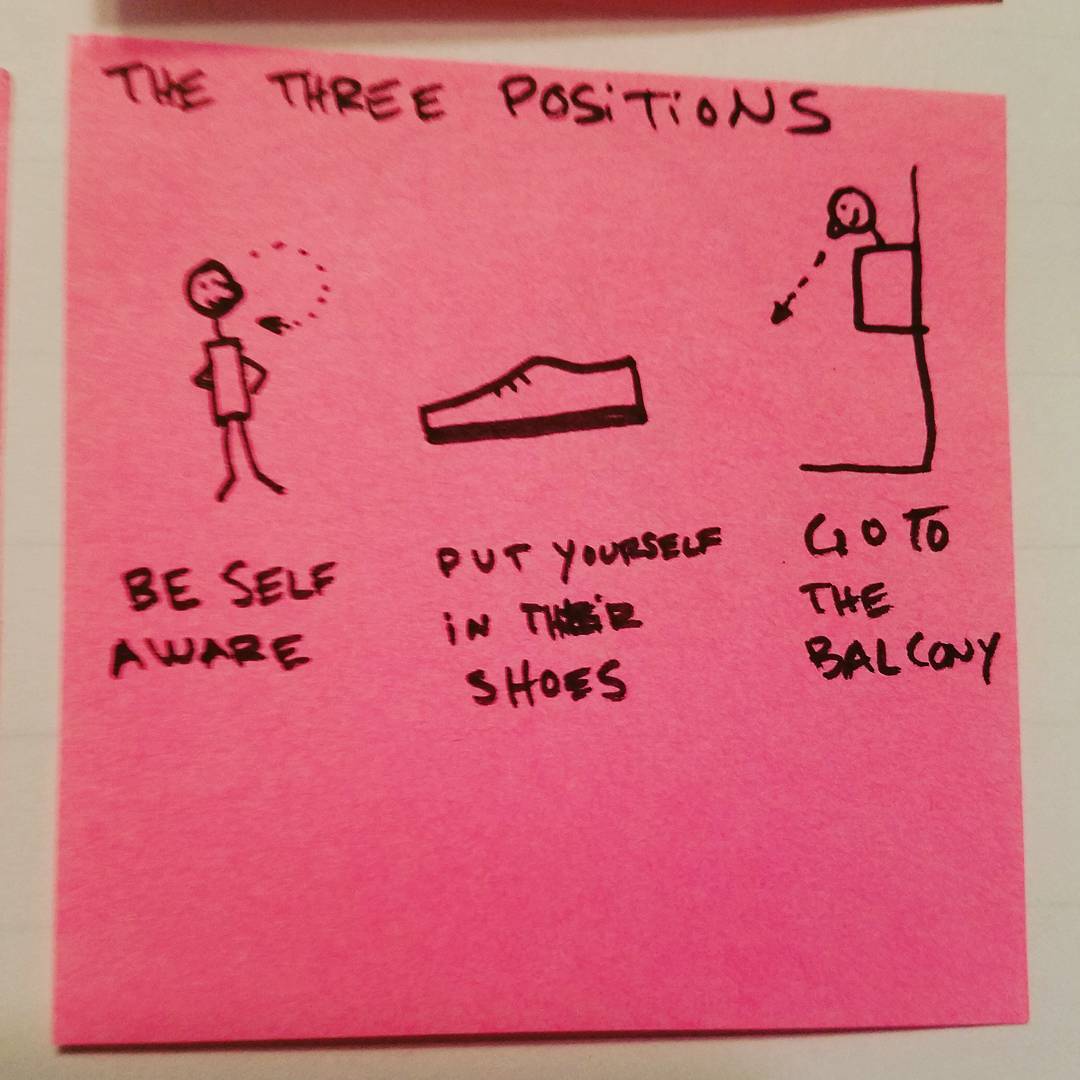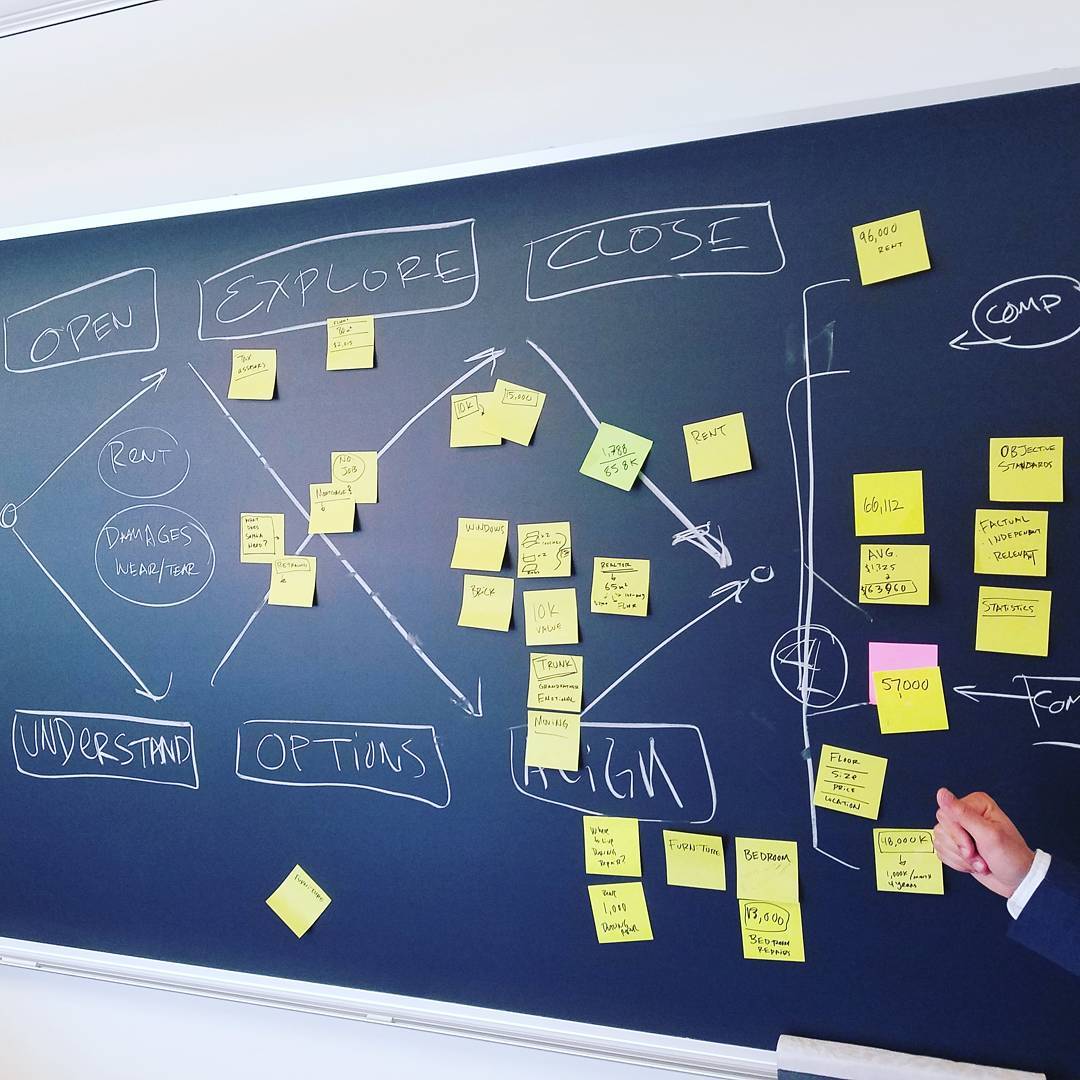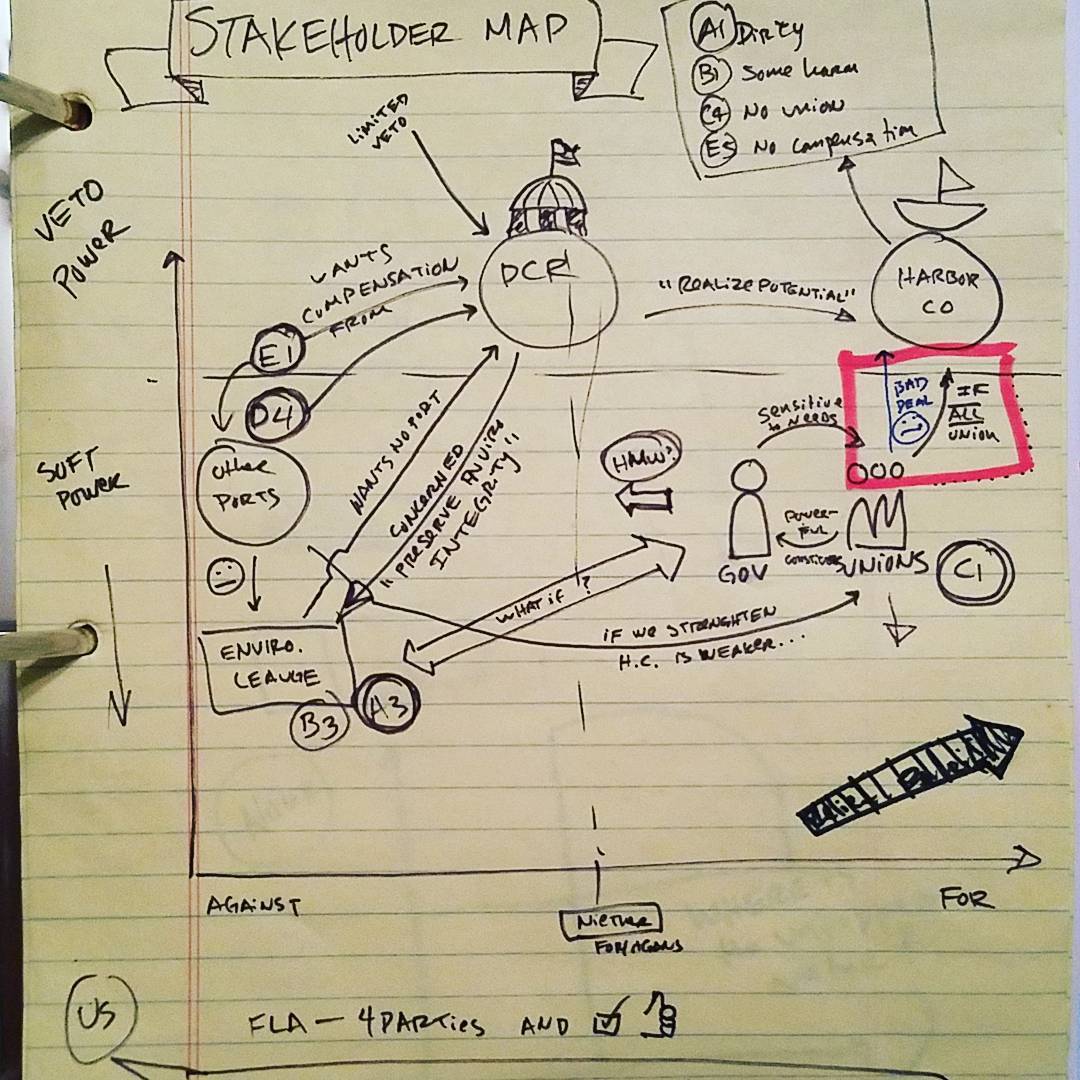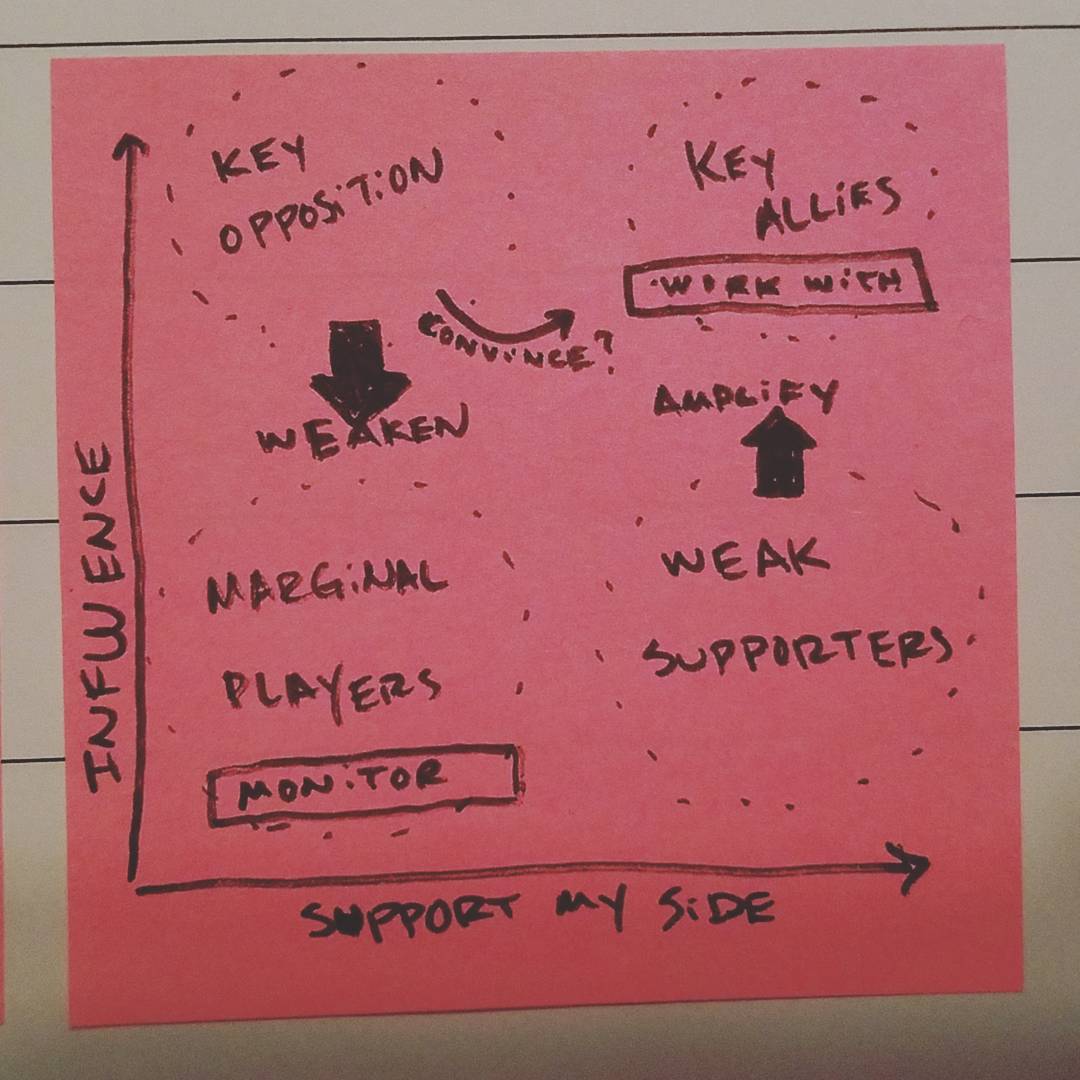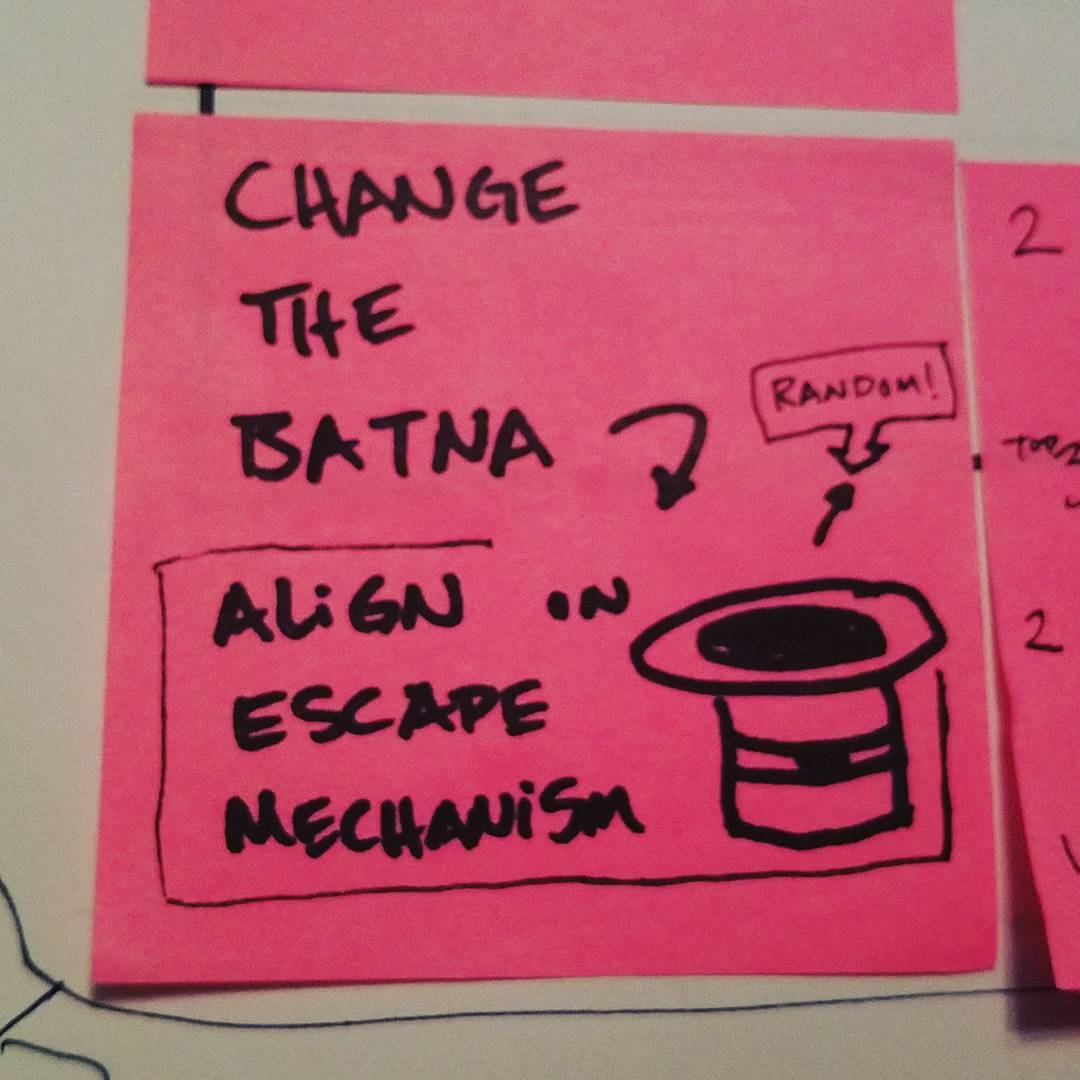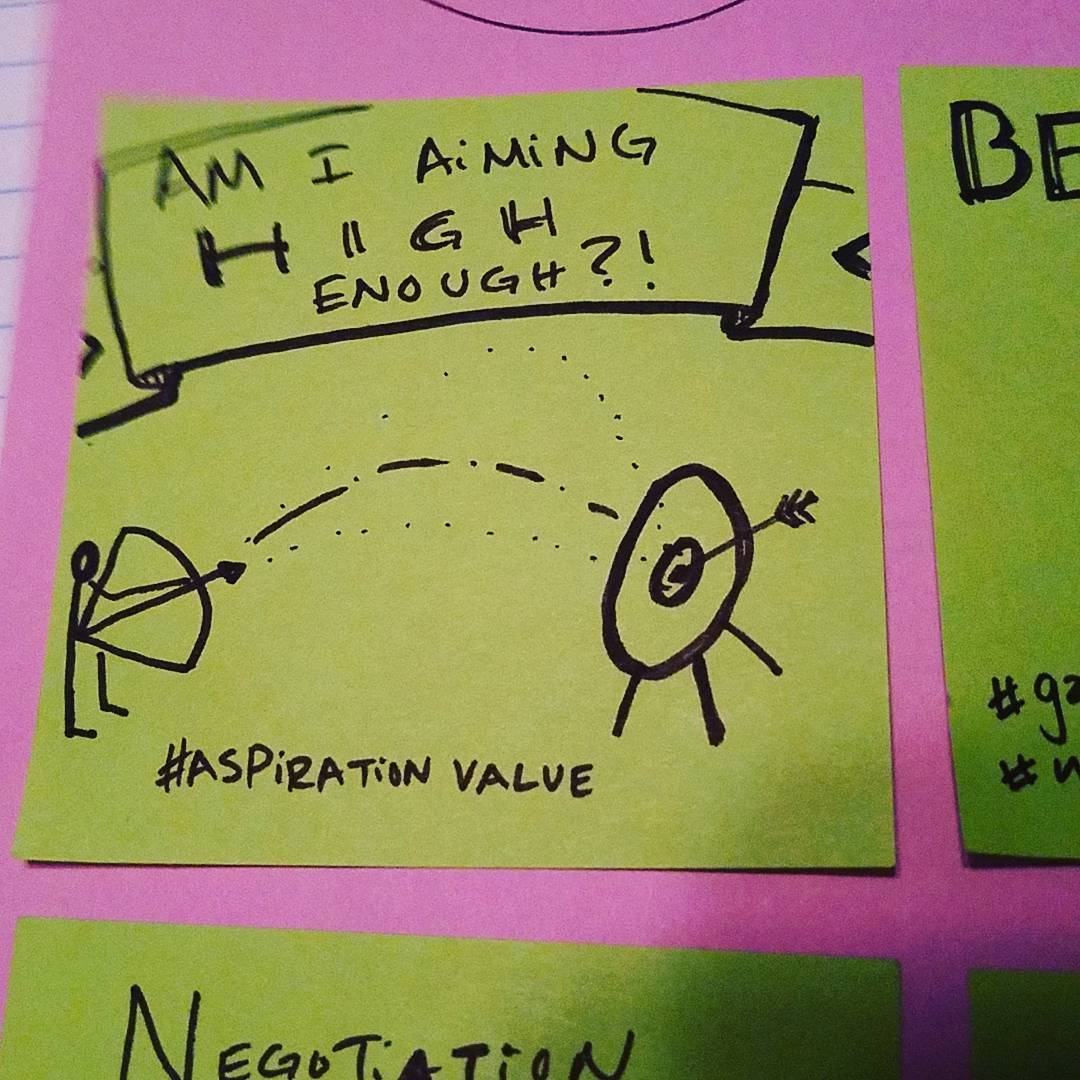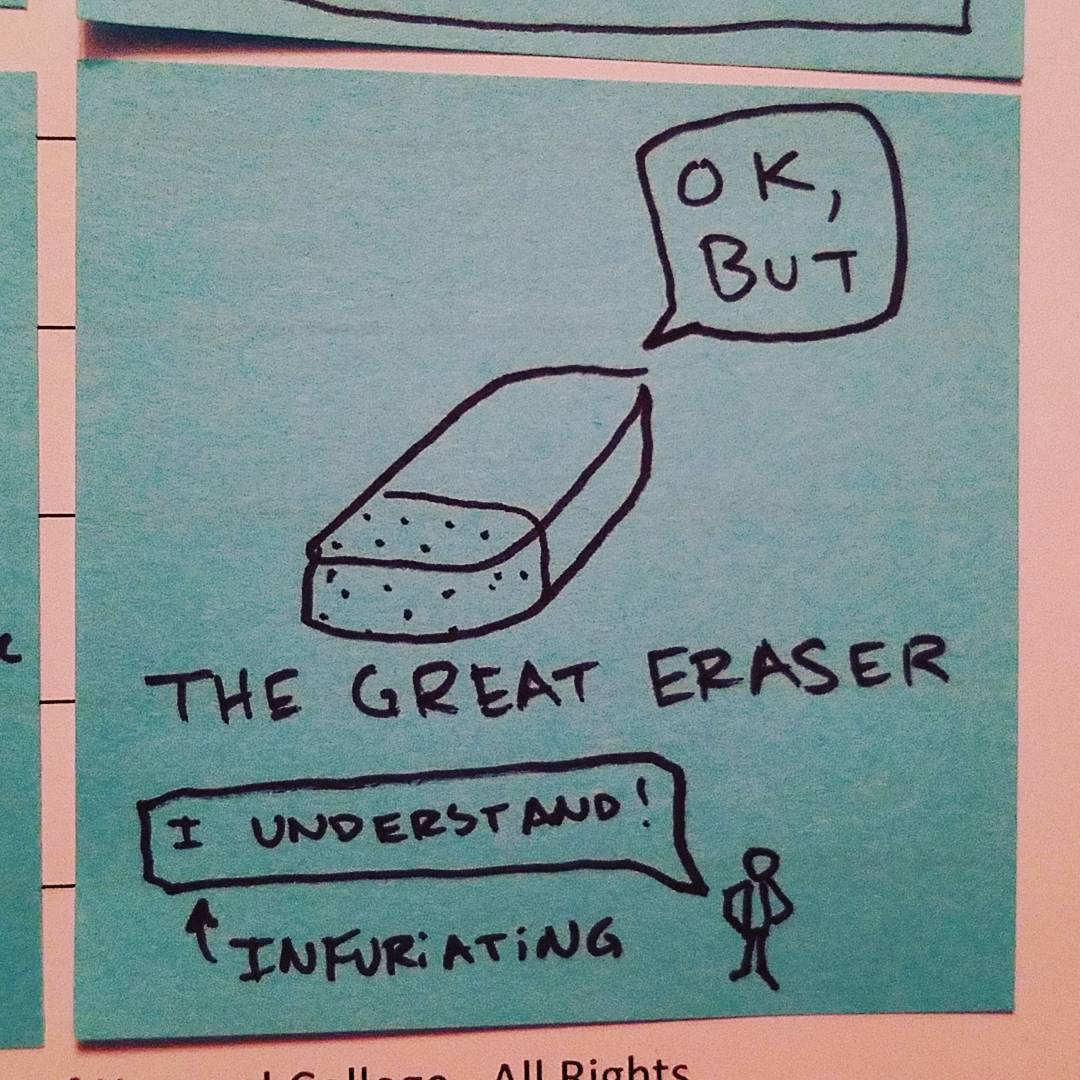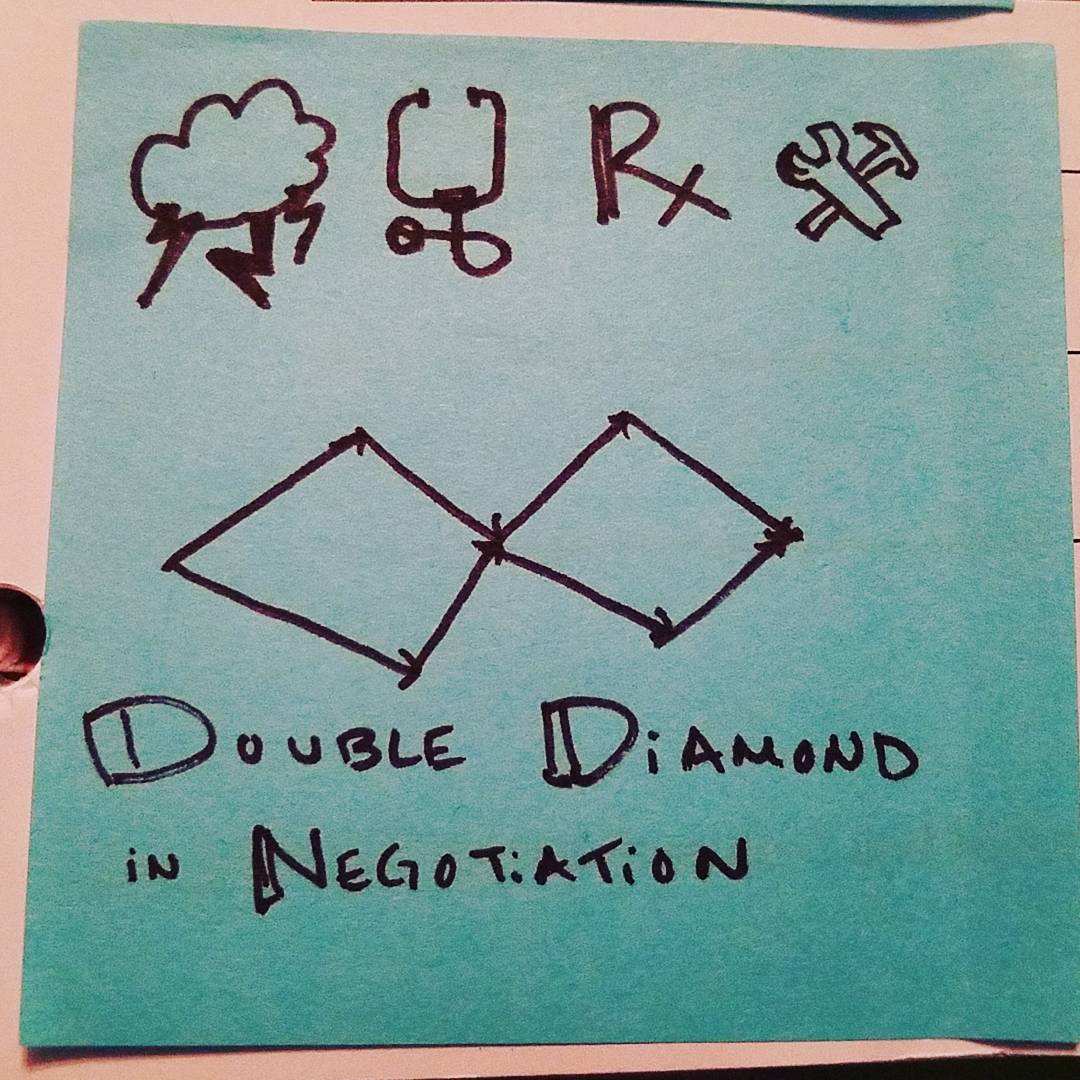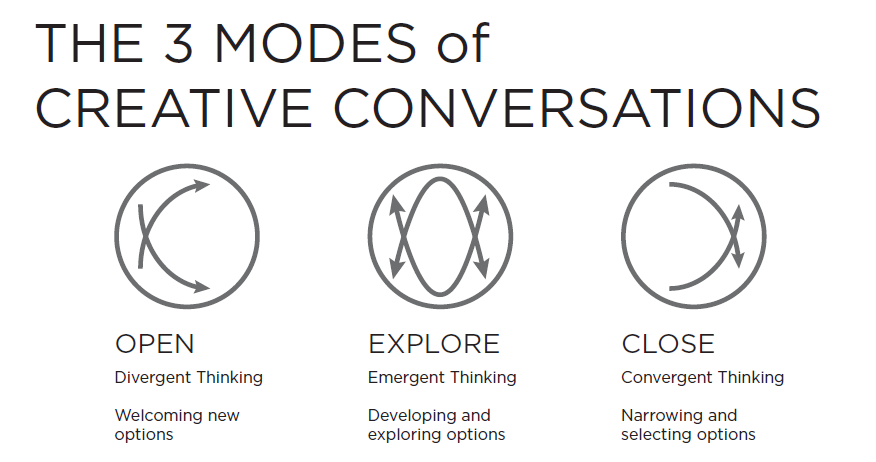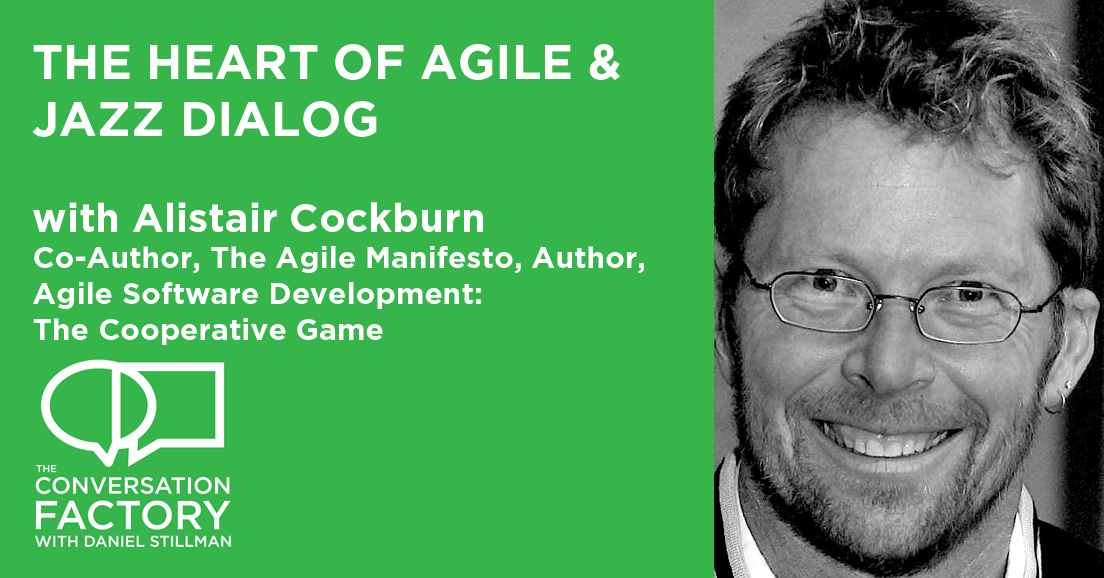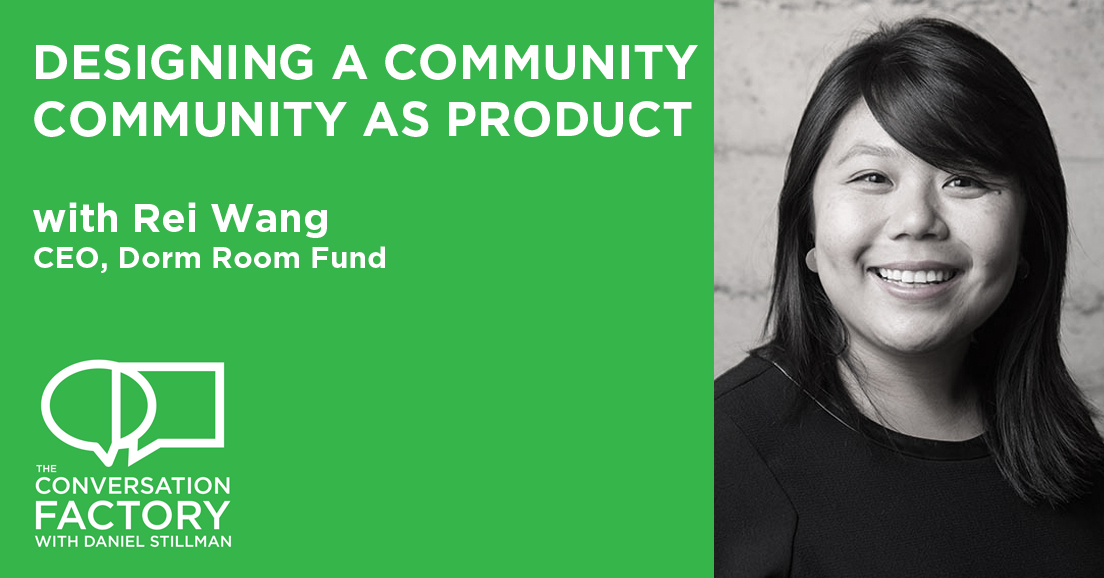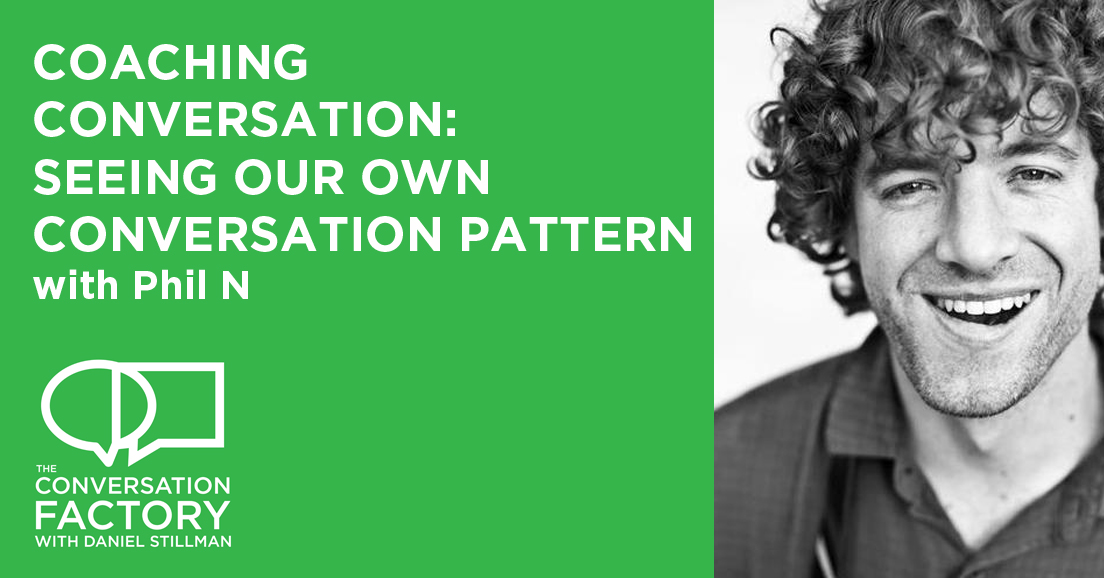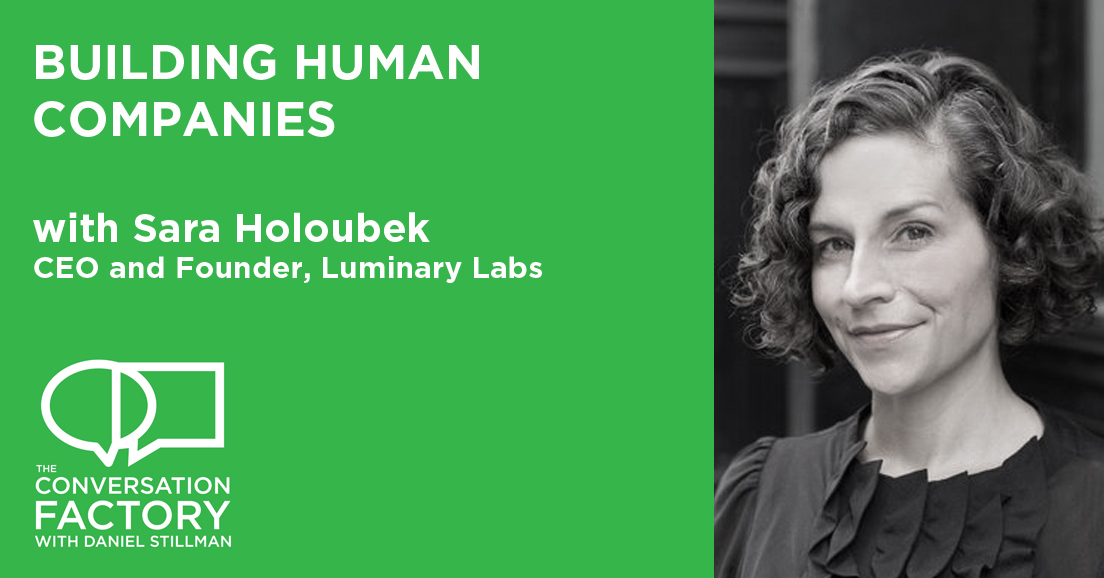Today I talk with Luminary Labs CEO and founder Sara Holoubek. Luminary Labs is a really unique company that both consults with companies on strategy and also helps run massive open innovation programs for organizations. We talk about working on problems that matter, on how humans have always been more nuanced than marketers and how companies need to be creating Intelligence Engines.
One of the things that Sara helped me think about is an idea i've been noodling with about Complimentarity vs. Non-Complimentarity. How in situations, you have really only these two choices: to go with or against the current tide. Sara helped me see that the conversation between a company and the culture it's in is very similar to the conversation two people might have! Companies face that choice, too. Only, too many companies choose to go along with trends or not...not intentionally, but mostly unintentionally. And that's the thing about design: everything is designed, either well, or poorly, intentionally or unintentionally. Sara clearly helps companies and the people in them be more intentional about their work.
In trying to re-design a conversation you're in, you can shift patterns by consciously pushing with or against them. David Bohm tells a great story about this in "On Dialogue"...a psychologist was treating a young girl who wouldn't talk to anybody. After an hour of fruitless attempts, he was exasperated and said "why won't you talk to me?"
"because I hate you" she countered: She was pushing *back* on his energy, you see?
So he asked "how long will you hate me?"
she said "I'll hate you forever"
Then he kept with it, taking the logic further "how long will you hate me forever?"
Somehow, this broke the spell and the little girl laughed. He kept questioning her refusal... somehow, taking it seriously helped shift it.
What is that behavior? He somehow accepted what was happening with the little girl, but questioning it in the right way, shifted the conversation.
I learned about non-complimentarity from Invisibilia, an *awesome* podcast from NPR. I'll link the episode in the notes: in the show opening they talk about a group of people drinking wine in their back yard who get help up at gunpoint. They tell the robber they have nothing, so they offer him a glass of wine instead...which flips the whole script of getting robbed. Spoiler alert: it ends in a group hug. Enjoy that episode from Invisibilia and enjoy this episode, too! I hope you learn something about redesigning conversations for your own context...
LINKS
Luminary labs
http://www.luminary-labs.com/
David Bohm on Dialoue:
https://books.google.com/books?id=MGGF_oF_aY0C&pg=PA39&lpg=PA39&dq=david+bohm+hate+forever&source=bl&ots=XLd7-M0_C-&sig=KIsBqx0ZloNlZXzXhu3LC2S3jMw&hl=en&sa=X&ved=0ahUKEwiu7sunzKTTAhVnw4MKHX8tB0AQ6AEIJzAB#v=onepage&q=david%20bohm%20hate%20forever&f=false
Invisibilia: Flip the Script
http://www.npr.org/programs/invisibilia/485603559/flip-the-script
Toothpaste Medium Article
https://byrslf.co/the-problems-that-matter-21b627876a64
Gartner Hype Cycle
http://www.gartner.com/newsroom/id/3412017
The Human Company Playbook
http://www.humancompanyplaybook.com/manifesto/
Makers and Takers
https://www.amazon.com/dp/B014BR46P2/
Danny Meyer
https://www.amazon.com/dp/B000OI0FCQ
EdSim Challenge
https://www.edsimchallenge.com/
Avoiding the 20 Million Dollar Mistake:
http://www.mckinsey.com/business-functions/strategy-and-corporate-finance/our-insights/delighting-in-the-possible
RAT vs MVP
https://hackernoon.com/the-mvp-is-dead-long-live-the-rat-233d5d16ab02?gi=b951b664673e
Transcript:
Sara : You know, if something's happening to your company and it is truly seismic and there is a larger force if you don't have a lot of control of really the force itself that you have complete control over what you do. So you know if you're a pharmaceutical and machine learning is you know on the horizon you can ignore it or you can incorporate it. And then for the question becomes how do you organize around machine learning to improve dosage or identify a therapy, um, process or protocol or whatever you're using machine learning for, uh, it's what you do in response to the force that matters.
Daniel: Welcome to the conversation factory. I'm your host Daniel Stillman. Each episode I'll talk to an amazing conversation designer to try and distill insights we can all bring into our work and lives. Human conversation is a material that can be shaped by design and shifting conversations in everyday meetings and organizations and yourself can create real change and I hope to help you do it better and more authentically. I'd love to have you stay part of the conversation. Head over to the conversation factory.com to sign up for my newsletter and never miss an episode. That's the conversation factory.com I'd also love for you to be part of the show if there's a challenging transformation you're working through, head over to the Conversation factory.com Click coaching and sign up for 30 minutes of free coaching that I might use on the show. Head over to the Conversation factory.com hit coaching and let me know what conversations you need. Help redesign it and enjoy the episode.
Daniel: Today I talk with luminary labs, CEO and founder Sarah Holbeck. Luminary labs is a really unique company that both consults with companies on strategy and also helps run massive open innovation programs for organizations. Today we talk about working on problems that matter on how humans have always been more nuanced than marketers and how companies need to be creating intelligence engines. One of the things that Sarah helped me think about is an idea I've been noodling with about complementarity versus non complimentarity. How in situations you really only have these two choices to go with or against the current tide. Sarah helped me see that the conversation between a company and the culture it's in is very similar to the conversation to people might have companies face that choice to only too many companies choose to go along with trends or not, not intentionally, but mostly unintentionally. And that's the thing about design.
Daniel: Everything is designed either well or poorly, intentionally or unintentionally. Sarah helps companies and the people in them be more intentional about their work and trying to redesign a conversation you're in. You can shift patterns by consciously pushing with or against them. David Bohm tells a great story about this. In his book on dialogue, a psychologist was treating a young girl who wouldn't talk to anybody, and after an hour of fruitless attempts, he was exasperated and said, why won't you talk to me because I hate you. She countered. She was pushing back on this energy, you see? So he asked, how long will you hate me? She said, I'll hate you forever. But then he kept with it, taking the logic further, how long will you hate me forever? Somehow this broke the spell and a little girl laughed and he kept questioning her refusal. Somehow taking it seriously helped shifted.
Daniel: What does that behavior, he somehow accepted what was happening with the little girl, but questioning it in the right weight shifted the conversation. I learned about non complimentarity from invisibility that an awesome podcast on NPR. I'll leave the episode in the notes in the show opening. They talk about a group of people drinking wine in their backyard who get held, held up at gunpoint. They tell the robber they have nothing. So they offer him a glass of wine instead, which flips the whole script of getting robbed. Spoiler alert, it ends in a group hug. Enjoy that episode from Invisibilia and enjoy this episode too. I hope you learn something about redesigning conversations in your own context.
Sara : Sara, Thank you very much for joining me today. I really appreciate your time. Um, you are the CEO and founder of luminary labs and you guys help organizations transform themselves from the inside out and also from the outside in. The first question I wanted to ask you about was, um, an article you wrote about toothpaste in regards to making sure that we're solving problems that matter and I just think that's a really important idea these days. Can you tell me a little bit about that shift for you, between a that getting pulled closer and closer to problems that you were more passionate about?
Sara : Sure. I spent the first part of my career and what I would call the early Internet and so I was in business school in France in the late nineties and I was very interested in understanding consumers' people, real people, what they thought and felt and very intrigued by this idea that there was a science behind what we liked and this conversation between brands and people. So at the time I really wanted to work the field of branding and a friend of mine who had gone to the same business school said, you don't want to do that, Sarah, you want to work in the Internet? And I was like, what? What does that mean your work in the Internet? Again, this is like 1998, 1999 and so, um, upon graduation, you know, I returned from France to the United States and headed to New York where at that time if you had a pulse, they were like, come work for our Internet company and they were everywhere and you probably remember, you know, Cosmo and uh, you know, uh, the globe and many of those early digital companies.
Sara : And so I went to work for a company called organic. It was one of the first digital agencies today. That's a very known thing. What, you know, we know what a digital agency looks like. But in 1988 and 99, it was an exercise in inventing everything. So I was in the strategy group, I was an analyst and we were trying to understand how companies should or should not go online. So when we think about online banking, nearly everybody has some form of online banking today. But back then it was known he really didn't this online and we were trying to understand, you know, what type of person would do this online ? And keep in mind, not like very few people had broad band. You had broadband at work, at home, you're still using a up. And so over the years, uh, you know, the excitement of always doing the new thing, just it was constantly fresh.
Sara : You know, at first it was how do we connect with people through the Internet. You know, later it was how do we advertise to people through the Internet and it became more social. How do we engage with people through the Internet? How does search, um, help us understand what real people want and need? And that fueled me for so many years. I felt like I was at the forefront of something. But then I hit a point where I realized that like when search, you know, it was over and it flipped over to video or social and not what the job is done in any pieces. Um, because I was really sort of peddling the same thing over and over again. Um, it was less about the technology. And I'm not a technologist by trade. I'm not a coder. I'm not a designer. I'm a strategist.
Sara : And I realized that I was being asked to take everything I learned about radically transforming industries. And I think the pinnacle, um, was having worked with a major real estate company when it was the largest in the United States at the time too, to rapidly revamp how people like searched and bought homes. At the time, nobody was doing this online and realtors were very much against the Internet because it meant you couldn't keep people in your car as you drove them around to see homes and to reshape that industry and help a very large organization, hobbits fields here is understand that people would actually spend more money and spend less time buying a home. And that would be a good thing for everybody was it was incredible how we did this. We completely change how people do this online. And then the next account that came along with a toothpaste accountant while brushing your teeth is very important. And I don't mean to make light of it, I mean if we really serious early childhood cavities are actually a major problem that needs to be addressed. The problem I was being asked to look at was, um, a new, I think the two phase had like a new stripe and the stripe had a sparkle in it. And I was like, oh my goodness, really, like I have to work on this. And
Daniel: they were sparkly.
Sara : Are there a lot of people who love to do this? And it makes the music sing inside of them and they should do that. But it wasn't right for me. And, and so that led me down this path of wondering, you know, is there something else I should do? And so for a period of time, I, every time I was job hunting, I would always look at something in digital. And then I'd always look at a nonprofit job and that would apply from both. And I kept doing the digital thing, um, until until probably like 10 years ago when a little bit over 10 years ago when I was an independent consultant and a healthcare company called me and I was like, wow, I'm so sees everything I know to help a pharmaceutical. This could go really, really well if you'd go really, really poorly. And I was characterizing Pharma because I didn't actually know a lot about Pharma. And long story short, it was the best thing I ever did.
Sara : Hmm.
Daniel: It's so interesting because you're almost talking about like the Gartner hype cycle where when you get past the complex region, it's less interesting to you.
Sara : Yeah.
Daniel: You really want to be in that part where there's more, uh, more chaos but also more opportunity to make a real impact.
Sara : Yes. I think this is particularly true because in those early days you get to experiment and stretch things. And I would argue then that marketers are usually the first table I'm onto new technology. And while that's a really great, it's also a source of frustration for me when the vendor using technologies can be used to improve life for the billions on this. So either when we think about everything from search and social to smartphones, blockchain, you know, our minds immediately go to how can we create commercial value, which is not, I've had thing and we should absolutely do that. But we completely forget. And when I say we, I mean the people who actually worked with the technology, um, corporations and investors, we completely forget where very big opportunities are to ensure a more equitable future.
Daniel: I want to tease something out cause I'm just going to guess because I, I feel this way, maybe you feel this way too that the, the, the real estate versus the toothpaste problem, again, not denigrating toothpaste whatsoever is this idea of creating lasting change.
Sara : Yeah.
Daniel: And um, the change of a certain scale. And I'm wondering if your interest in helping companies operationalize innovation comes from that same place in you were helping a company innovate in an incremental way or innovate once is not as satisfying as helping them create a lasting change inside of their organization that allows them to continue to do that.
Sara : Yeah, I think there's, it's very intentional that we say that part of our mission is to transform not just organization industries at large. So he'll a really great program might yield a good result for right now, but a true innovation system create a longer term advantage or has a longer term effect. So again, the, you know, I'm less interested in the ad of the year award and more interested in, you know, how can we really think what we do? And it can be incremental. I'm not opposed to incremental innovation. I think there are places in time where that's actually important and maybe the best way to do things. Um
Sara : Hm.
Sara : But it really comes down to, is it last game right? And again, it could be at scale, it could not be a scale, it just depends upon the problem. But is it a lasting thing is something that you know, we will in 20 years or 50 years and wow. Do you remember when, so, you know, the one of the examples I give right now is you're, there was a time when you would buy your plane ticket and it would be mailed to you on that piece of paper. And it didn't even have to be you. You know, you could buy tickets from a friend and it didn't, the name didn't have to match them. And so for a lot of different reasons, that has changed everything from, um, homeland security to, you know, eat ticketing. So, uh, you know, how we organize what happened to the travel and, and that would be a really good example of an entire industry that has completely changed how they book.
Sara : Uh, how would they book a flight and, and how they, how they create their revenue streams. I think they're undergoing another round right now where, um, you know, we also say, remember when you used to get a meal and the meal actually had real silverware and now we're looking at either how many people can we pack into the, you know, into this airplane and you know, could it be even closer and could there be, you know, the low cost option in the back and you pay more for every additional thing you get to do. So, um, it, it is absolutely, you know, not only something of permanent, but you know, to your point about conversations and organizations have conversations like they do Evan flailing evolve with time.
Daniel: They sure do. And it seems like there's also like certain assumptions that shift that change how people expect that they're supposed to be acting. I think at some point you're, everyone was like, oh yeah, no free bags. And everyone was like, now we just accept that. Which is shocking in some ways.
Sara : Yeah. I think it's really helpful to look at the forces that affect any industry. And you leave very specifically talk about technological, economic, political and social norms of the 21st century. That's the time in which we operate right now, um, as a company. And while many of our clients will call us because there's a technological problem here, they're having trouble adapt to some new tech, no harm, whether it's usage by consumers or it's something that they're doing internally or if the potential of the technology to transform their industry. Ultimately we find that economic forces, political forces are social forces are also shifting how they do business. And so, um, it would be, it'd be silly to say that like tech lives outside of the society in which it operates, right? As we introduce new technologies, expectations of people, expectations of employees, expectations of investors also change.
Daniel: No. Some of those horses are within your scope of influence in, some of them aren't. So how do you, how do when a company starting to look at all of these forces, how do you get them to grapple with separating or teasing out these different forces? And making sure
Sara : why would argue, yeah, I would argue that if something's happening to your company and it is truly seismic and there is a larger force, you don't have a lot of control. I've really, the force itself that you have complete control over what you do. So you know, you hear pharmaceutical and machine learning is on the horizon, you can ignore it or you can incorporate it. And for the question becomes, how do you organize around machine learning to improve no sage or identify a fair fee, um, process or protocol or whatever you're using machine learning for. Um, it's what you do in response to the force that matters, right? So social norms are classic. I mean, we, you know, when, when the Internet came of age and we realized like every page is doing this at Tommy or there's a time when executives who say, but to real people do this.
Sara : And you say, well, do you go home and use youtube? And they're like, well, actually I do. And then it comes back to, I'll never forget this conversation. Was that an executive in, in, um, uh, franchise within a pharmaceutical? He was in the cancer for our franchise and it was heavily lost on him. That real people might actually go to youtube to learn more about cancer. It wasn't, it didn't feel super serious to him. And um, you, Yahoo answers, you know, it's a little bit, your people are actually asking questions that probably should go to their doctor and so rather than poo poo it or say that it is not serious, you should ask yourself why, why are real people trusting the Internet when they're not asking the same questions of medical professionals or are they asking questions of both and looking at the responses. And I think today we've, we've kind of crossed that line where it's like, okay, yes, real people do use the Internet for almost everything. And in fact it's probably the first place they go.
Daniel: Exactly. Like I feel like you have the strategists true love of human behavior. Like though the asking the why like not judging it, just saying isn't it amazing that people are acting this way?
Sara : Yeah. I mean everything is human injured. And I recently decided I was no longer agreeing to describe companies as data driven or tax driven. And because ultimately there has to be a human somewhere that, you know, even if you're just flipping the switch and you know, we can say, well you could build a machine and flip the switch, but then somebody has to build the machine. And yes. Yeah. I don't think a little on our extract humans completely. And, and I think it's, you know, all that is, well, there is the real fear of how technology will change our jobs and our livelihoods. That has always existed. We've always been afraid. Now if the new technology, and I think it is a complete error to assume that humans don't have a role, our role will change, but it will hopefully bring out what humans are best at. And um, there was something delightful and wonderful about humans that,
Daniel: um, can never be as you please. That's good. Yeah. If we never lose.
Sara : Yeah. Yeah. It's, it is. It's one of the biggest fallacies right now is that everything is all about the tech and, you know, forget people. And, and that's very fundamental to how we guide our clients in their work. Um, but also and how we think about how businesses organize and operate overall. You forget humanity. I don't know what you're doing on planet earth. Yeah.
Daniel: I definitely want to talk to you about the human company playbook and some stuff on your, your book club lists. But I also, but first I want to just go back a couple of beats. There was a couple of things you said that I just really want to um, capture. You talked about the ebb and flow of conversation and I'm wondering about the ebb and flow of the conversation between brands and people and how that relates to a company's innovation. Like are they, how are they pulling those, uh, those messages in or rejecting them?
Sara : Why are you might've exceeded my pay grade here while I answer it. Right. A lot of talking about consumer behavior. You, I've been a little bit outside of the advertising and of indication space for, for awhile that kind of posit some pain and tricks. And for Ahmed is you have to provide a service, like a good service or product. Like if people have to like have the thing. But I think what has been interesting in more recent years is that the thing is actually not a nun. Um, it's almost, it is everything is a commodity and it's these other layers on half of the things. And you liked the jacket, but does the jacket support the causes you care about? There's a jacket represent your values and does the medium through which the jacket to it cool enough? Um, or is it trying too hard and I think that is the had an la something many people have produced many, many studies about this that, you know, millennials have a very different uh, approach to deciding how they engage with brands.
Sara : You know, what did they buy, what do they not buy? And you know, I think where it gets most interesting is this high low combination where, um, people are comfortable mixing high end and low end products. Or you might buy a luxury jacket and then the genes or you know, from target date or something like that. Or whatever. Um, and, and it was confusing for the traditional marketer, right? Because we used to focus only on demographics and then I think when they integrate internet came around, I remember as an analyst it was all about demographics, technographics and psychographics, right? And we would look at audiences through those three lenses. And today, like the psychographic part is just off the charts, right? So people are no longer uniform. We, we think about people as look alike. So when you think about Amazon's recommendation engine or Netflix's recommendation engine that the collaborative filtering, has he ever done?
Sara : Like people might look alike in some areas but not in other areas. So our historic approach to grouping people no longer stands. We can no longer blank. Like with the Internet in particular because everybody can consume everything now you doesn't matter where you live and it doesn't matter how much money you make and you know, it doesn't matter, you know, all the basic household income or um, family size, things that used to dictate what your family would or what they would be interested in, you know, through the Internet. When I vote to say like, wow, you know, you like period pieces with a strong female lead, but you also like thrillers. So you know, it's, it is, it's more nuanced. I think humans and humans, it's probably always been new. Any more nuanced, I think marketers have been less nuanced in, in, in the past. So I think that's, that's probably what has changed in my mind. Okay.
Daniel: So we're just now sort of waking up to the complexity of humans and it's up to a company to reckon with that somehow.
Sara : Yeah. I mean, another really great example was when I first started working with the healthcare and Pharma, it was completely inappropriate to interject humor into any conversation grants, patients, because disease is not funny. But if you actually talk to people living with any disease, you weren't always comes up. And they said there's this big disconnect between what is perceived to be appropriate and what is actually helpful. And it's a fine line. It's not, I'm not saying it's easy ...but humans are nuanced. You know, you can live with diabetes and liver cancer and have a sense of humor about it. Many people will tell you that I fill only way they can get biased to have a sense of humor about it. Um, but learning how to authentically, um, have the humor there is, is hard. Right? So like it would probably be inappropriate for the pharmaceutical company to make the joke. Um, but to appreciate that real people are making a joke and acknowledging that it does it exist is it would be a really great way to better understand humans and the humans who are, um, living with a disease or benefiting from your therapy.
Daniel: Yeah. Yeah. And it seems like there's, there's that line and it's up to a company to sort of say, is this, is this the moment to transform that conversation to bring the humor in our people ready for it versus, um, maybe going a little too far. And that's a, it's a subtle sort of line.
Sara : I think it's, there's a way to honor the nuances in humans without trying to replicate it. Right. And so, um, you know, we always know when a brand is trying too hard. Like I kind of see what you're trying to go for. Not really working for me. Um, I think we see that with products that are marketed to women or moms and you're like, okay, I totally get it. You really want women to buy this. It didn't really need to be pink or you know, um, the ads that make dad look like a helpless, bumbling fool, like not really authentic. And while there might be jokes here and there, um, and sometimes it might be true in individual's situations because it's actually a disservice. And, and that's why those don't work so well.
Daniel: So how can a act more human? Cause we know that human and sort of pushing it a little too much. Right? And we need to pull it back.
Sara : Yeah. I think it's injured it, instead of listening to humans and, and you know, creating mechanisms. There are stuff like creating intelligence engines or anytime you're doing anything that catches a consumer for today's technology, you can learn a lot, right? So all the data that we have access to, um, all of the insights that we can gather, you know, what do you use them for just to like create the better ad or do you actually use it to inform everything you do? And so you oftentimes we'll find that this gets only into marketing and in fact some of that intelligence is best shared with product development or shared with, uh, maybe operations or finance. Right? So like how might they respond? What would they do differently if they knew how real humans behave? Um, and so that would be one way of being human if you'd like to get into on the bigger picture of human company design, um, customers are absolutely part of being human. So acknowledging that you, part of your reason to exist is to produce something for a customer.
Sara : I think what has happened in more recent years, probably the last 30 to 40 years, starting, I guess in the 70s, we decided that corporations exist to create shareholder value. And this is a very documented shifts. And economists and authors have written about this extensively. Um, but prior to the 70s, there was a big debate about whether the purpose of a corporation is to create shareholder value or not. And um, we chose shareholder value. Um, unfortunately we chose exclusively shareholder value and so when push comes to shove the decisions, especially public companies, um, really foster shareholder value over the customer over their employees, over society at large. And I think this is a massive problem throughout all of corporate America and even beyond the United States has as some of our recent research has suggested. Um, and we've completely forgotten that value can be created by investing in people are not just extracting from people.
Sara : So we, we define human company design as a management approach that creates value by investing in people. And so then the free and ticketed says erase is the antithesis of extracting from people. So when you think about wage labor, it's an extraction. You do this for me and I will give you money, right? So I'm not actually investing in you, I'm just exchanging money for the thing you gave me. And what would be seen in the last two or three years has been a sea change of organizations that are suggesting that they might actually create longer value. And especially over the long run, it's like greater value over the long run by investing in people. And this means investing in their employees, but also beyond that I means investing in communities. That means investing in customers. That means investing in, in anybody who is a human...ultimately shareholders as well, but not putting shareholders first, which is what most companies do.
Daniel: Yeah. This is fascinating because I'm, one of the questions I wanted to ask you was, there was a Peter Drucker quote in one of your presentations about a company's primary responsibility is to serve its customers. The profit is not the primary goal, but it's a condition for the company's continued existence in sustainability. And what's interesting is the flip side of that is like I'm always a fan of Danny Meyer's employee first because his theory is if you take care of the employees, everything else will be taken care of. And what you're, what I'm hearing you say is that it's a false dichotomy.
Sara : Yeah. I'd be really curious to know what Drucker would say if he were alive today. You know, again, going back to conversations that ebb and flow, I think his argument was it heard of this conversation with Milton Friedman, right? Who, who really did push, you know, profit is the only responsibility. I think he at one point said this is the only social responsibility and take anything else would be unadulterated socialism. So, right. And so Drucker's like, oh, that's not really why we create profit and there are really opposing views. I'm like, why you? Why do you start a business? Why you take a business public? Um, why do you, you know, what do you do with your profit? And I think what, you know, the recent research has really embraced the investing in people and defining people more broadly is that, and we through our work, see really big problems affecting the world. When I talk about chronic disease, and for example take diabetes with maybe 27, 28, 29 million people living with diabetes in America, and also there just around 80 million maybe who have pre-diabetes. Oftentimes we'll talk about especially type two diabetes as a lifestyle disease, right? So he put the blame on the person is erroneous. The number one thing that dictates your lifestyle is your job.
Sara : How long does it take you to get to work? What are you doing when you're in the work? What are you allowed to eat or when can you eat? How much does it cost at work? It is incredible how companies disctate the society in which we operate. And I do believe that things like chronic disease could be addressed through how companies are designed, right? So like what is, you know, every company invested more in people in their health and that doesn't mean I'm paying for your healthcare. That's what that's like a first step. Like that to me is sort of like basics, but like what if you allowed for exercise? You know, imagine somebody who, um, have to be to work at eight. Let's say your day is eight to five, which is really quite rare today. Um, and you have an hour commute, which means they are leaving their house at seven.
Sara : Listen, you're a family with two kids. Okay? What do you eat? What do your kids eat? How does your kid get to school? How do you get to work? What do you eat? Do you have time to eat? You know, does your company book through lunch idea? They'd be glad to do it. Okay, you get back in your car, you get home, okay, now it's six o'clock. How much time do you have to make dinner, make dinner, and what time does your kid go to bed? What time do you go to bed? Do you jump back online? Like this is the rat race as a total rat race that, you know, we sort of sell ourselves this koolaid and dreams that Koolaid that like we're trying to change the world. And this happens particularly in startup setting. I'm working, I just described, so they work like an eight hour day.
Sara : What does it look like when you work at 10? Right? And you know, I think about things like chronic disease and I think about things like literacy and I think that brow, um, social emotional learning and, and all of these things that, you know, whether you're a child or an adult, um, how much work and how we've designed the private sector in particular to operate that affects this. And so the first question is like, well, you actually change your business and still be profitable. I think the answer is absolutely yes. In fact, you can create more value. And so what we're doing through the human company playbook is conducting a series of interviews of CEOS who embrace this approach and the theater. Some of them are public companies and early stage companies. Some are private air. It just spans the gamut spans industry and we're trying to undercover the common shared values. What are these core tenants and how does it play out so that we can give advice to new entrepreneurs as well as other executives as to how they might want to build a more human company and what return looks like when you can expect that return and the end of the day for pointing out that there is a choice. There's nothing about the business that is written in stone. We as a society shows, organize or work the way we have today is accurate. Maybe the scariest part,
Daniel: oh, interesting about that is when I talk to people about design thinking, one of the things I try to tell them is that everything around them has been designed, which means that it can, that's either been designed well or it's been designed poorly or unintentionally and that everything around them can be designed with intention and that goes to the companies that we work in. There are certain choices that have been made based on certain assumptions that can be remade. And what sounds like what you're trying to do is explain to people the impact of these various choices and that these things that seem extravagant, like not booking through lunch and maybe even buying people lunch have,
Sara : Huh?
Daniel: Over time a more positive effect than the sort of short term gain of let's book more time and let's not spend money on stuff we don't have to spend money on.
Sara : Wait really explicitly shadow Friedman's in overdraft, overdraft. Right. And I need to get an age. And you know, the very quick read shows and what's interesting, not sure corporations, but federal government and how we look at the finance industry, how we look at corporate law. We've chose to allow for that to happen and to even foster it. So, you know, every CEO will say like, my job is to create as a shareholder value as possible under the current loss of stem. Right? We can stir. You're like, if you know, if that's what your company is designed to do. Um, but when we look at it and we look at how people in seats of power make decisions, when we think about employee compensation and executive compensation, are we looking at like a pay cap? Um, we looked at how the care access all these decisions directly contribute to income, any quality, right?
Sara : So it's like, and I'm not necessarily, I'm not anti Catholic or like I'm a CEO and private sector company. I invested in early stage companies, but I do think that one could be more mindful about the distribution, right? So if you're running a profitable company and I don't care what size it is and anybody in your company cannot afford to make ends meet, right? So like for like the average sized family, then you're probably doing something wrong and you are contributing to this larger problem of income inequality. Both have really interesting is that the income gap and the wealth gap that we see amongst individuals is also being replicated on, um, the company end of things. So as companies are making more and more money and corporate profits are actually at an all time high, the distribution is uneven. So top performing companies, I'll paste the rest and that creates a competitive advantage.
Sara : And so, um, that's a big barrier to competition. And so it really is a winner take all model and that's actually not good for American business. So when you think about s and p companies, the average lifespan of an s and p company today is just 12 years. And that should scare people right now. And so we chose like, we actually chose to make, um, America as a country rich. So all time high profits, you know, CEO pay through the roof, but we also share is not to make Americans like the people ranch. And so the middle class is no longer than majority. And this is all about company design. And when I say company design is in tandem with policy. Yeah. So a really good book to read if you're interested in this as makers and takers, um, came out last year and it talks about the financialization of American business and really breaks it down, um, in a way that you know, even the lay person can, can understand.
Daniel: That's fascinating. We're almost talking about the difference between an extractive relationship and a sustained relationship and that can go between a company and employees and also between the company and its users and just making sure that there's a balanced, balanced and sustainable perspective and all those relationships just really, yeah.
Sara : Okay. Yeah, and it's, but here's the problem. Even though we know that investing more today will yield even more in 10 years are short term, mindset is so stuck that we won't do it right. So most CEOs don't feel that they have the liberty to invest in the thing that will help them in the long run because there is so much pressure from their board to get done what they need to get done this quarter, this year, next two years, and this is very dangerous. I think it's is. While I love America's ability to think quickly and be agile and shift can respond to what's happening today or inability to think about the long term and outcome is, is going to hurt. It's going to hurt.
Daniel: Yes, I needed this. Quarterly capitalism is definitely a challenge. It sounds like you're helping companies kind of look around the corner and a lot of ways you use the term intelligence engines. I'm wondering if you could talk a little bit about how you build an intelligence engine in a company and if it kind of helps some of these challenges that we're talking about.
Sara : That's a good questions. I will say that all of our clients and do you struggle a quarterly capitalism and the long run, it is a perennial. Okay. A challenge that you have to help them through, through, you know, whether it's communicating to your senior leadership team or to your CEO or to the board, you know, why you might want to make this investment today and something that is a moonshot. Um, it's part of our job and we do do that every day, especially on our strategy side of the business where it's all behind the scenes. Like you're not going to read about this in the newspaper because it is very contentious and very, um, very important. Right? Like you've got a big nut of money and where do you put it? Um, on the other hand, um, you know, there are sort of smaller steps that you can take and so intelligence engines can really be, I mean, anything that you produced that touches people, collects intelligence, and it can ultimately be used to inform other parts of the business.
Sara : So when are you are, you know, Jane and Interactive advertising or are we had her team touches that, you know, or you're Joe, you know, in clinical trials if you're collecting information that might have a greater purpose, we have to figure out how to get the data to flow right and how to, even more than the data share the insights. Right? Um, and so, um, that is, that is also a really big challenge for organizations. I didn't find that the technology, like once you get past the tech hurdle, like, okay, we're going to do this. The bigger problem is always organizational. All right? So anybody can build a dashboard. Anybody can build an intelligence engine, anybody can build a machine learning team. But what usually helps or hinders the effort is does the organization circle around it and support it
Daniel: or not? Right? So one problem is the organization isn't pulling in the intelligence. The second problem is they're not turning that into insight. And then the third would be they're not actually turning it into something that they act on.
Sara : Yeah.
Sara : Well or even sharing it across silos. Right. Team. So you know, if you, you know, the example I gave before the person in interactive marketing and the person in clinical trials might not ever talk. Yes, they are in completely different ends of an organization that might have 100,000 employees.
Daniel: Totally. And
Sara : yeah, and, and when we say silos is actively see like, Oh yes, the silo. So why is that those existing mostly exist because of how we budget. So every year, um, if you're lucky somebody giving you goals for the next year, like overarching, like the three things our company wants to do and the next one, whenever years and from that you come up with programs and then the budget to run those programs or those things. In many companies it's just like, you know, what do you want to do? We'll look at it and then we'll tell you which pieces you get. It always becomes this really awkward fight for budget and control. And you know, I mean I, my dream project is someday I a love to help a major organization where you think its budgeting process. I knew that is large and lofty. Um, but if there is one thing that companies need to think about, I think it's um, well actually they're pretty things or like how do you budget, how do you hire and how do you procure? The three processes are very antiquated and they um, there is also a lot of like legal reasons why they happen the way they happened today that I think they hold America back from, from really breaking through to, to the big innovations that will, you know, not just transform their own organization but their industry at large.
Daniel: Yeah. So one thing I did want to talk to you about open innovation because you guys at luminary labs help companies build platforms to pull in a lot of intelligence, it seems pretty quickly. And I was looking at like the Ed Sim Challenge. This is something you guys do, it seems like a fair bit.
Sara : Yeah. So six years ago, um, had a client that wanted to pilot for some early stage companies and in the health space and so we decided to run a price competition. They never done this before. There were models for this, um, mostly hackathons and like a lot like smaller scale challenges, but they were also things like x prize that we observed. And, and so we went out and we designed to challenge the luminary way we took the best practices of the things that we like to be sort of rejected. Some of the other things that we didn't really like. And what we ended up creating was what is known as a multistage competition. And what that means is that, um, after everyone said Ned, that you're able to narrow it down to five participants who can't seed money and then access to a virtual accelerator, uh, where there's mentorship, educational modules.
Sara : There's also an in person bootcamp where they can refine their solutions by having access again to maybe the sponsoring organization or um, people who might and help them feel some of the gaps that they have. And then they, yeah, so he's trying to give away money and the five teams present at Demo Day, usually a live demo day. And um, following that Missouri, we'll select a winner. In some cases the jury reflect you finalists who get to actually test their prototype in a setting, like a clinical setting or tested in the field. And then a winter would be selected. So in any cases is really different from the previous model of enter your id and we give you money for the best idea. Again, we go back to you, we'd like to make it real. So, um, so this first prize competition was for a pharmaceutical.
Sara : It was the first time that a pharmaceutical ad Dennis at such as like large scale, um, the price price is $250,000. And at the time we were accused of prize inflation because the prizes that has more, more like $25,000. And we thought we would do this once. And that was like, it was a project. It was great and accomplish the goal. Um, but we did it in such a different way that we started to get phone calls. And so today we have a thriving open innovation practice. Um, in addition to working with the private sector, um, we also now I have ever met contracts. So we, we power Ed prizes or the US Department of Education. And that's where you saw the Edson challenge. We is asking gamers and Vr and ar developers to create simulations at transfer skillsets. And so imagine you're a student, you're trying to pick a career path, especially if you're in the, in his career and tech Ed.
Sara : How do you know which direction to go in? What if in a future world, you know, today you can read about these things and in books. And I'm like, what if you could put on the headset and actually try on that job? You know, this is actually being used at places like caterpillar and like hospitals, like a bullet training is one of the great examples we talk about where simulations that are really important to getting the job done safely. Um, but what if it were on a larger scale, but if it were interactive with all right, so you could go from job to job. So that's what the had some challenges. Um, we also, um, power challenges for the private sector as I mentioned before and foundations. And I think more recently we're seeing, um, specialization in bringing together a sponsor and a technology company or a particular technologies. When you think about Edson, it's like education policy, Vr, ar in gaming. The mood challenge for research kit
Sara : is, um, funded by the Robert Wood Johnson Foundation. Um, but it's solely focused on research can't, which is Apple's, I've been framework, right? So we're taking it again, two different things and bringing them together to do the technology. And the latest would be analysis are really excited about, um, it will be launched actually in April. It was announced last month is the Alexa diabetes calendar said, we're going to be calling upon innovators to the right skills for an Amazon Alexa. And it's supporting voice technology platform to help people living with diabetes, right. Live their life. And so in this case, you have Merck as a sponsor and Amazon as a partner. And we're squarely focused on voice technology through Alexa. So, um, this is a, is a great part of our work. It's, it's not everything we do, but it's a, it's probably the most public thing we do because as I mentioned earlier, anytime you're giving away money and we've given over I guess, over $5 million away, um, and the past like five years, um, you know, it gets a lot of attention. Really. Cool.
Daniel: So the question is, one of the questions I have as a followup to that is in my own experience, companies don't have a lack of ideas. They a challenge of knowing how to get things out the door. Like there's too many rules internally inside of the organization that keep teams from launching things that they're excited about. And I'm not saying in any way shape or like obviously open innovation is important because sometimes the block is, we don't know what's around the corner, but what do you do with your other clients who have that other problem where they don't know how to do this? Failure to launch?
Sara : Right. So, uh, I remember Frieda Lewis Hall who is the chief medical officer and an EVP at Pfizer at I think it was the tech lead conference years ago, quoted her husband and he said less ideas, more I doers. They just really stuck, right? Ideas are great, everybody has ideas, but real innovation isn't in the idea is in the ability to stand it up. And so if he's, one of the areas where we've been particularly as supportive of companies that struggle with the getting it done is breaking it down. So every client of ours has made what I call the $20 million mistake. And whenever I say this, they all think I'm talking about them, but they, they, they've all done it at some point. And some executives career $20 million is wasted on a program that was a complete flop. And it was because it was done in a waterfall fashion where it's like, here's the idea.
Sara : Okay, let's make the idea bigger. Okay, let's build the idea is to add on to the idea. And, and nobody has ever stopped to have sort of stage gates that connect with the people that would be making use of the thing or interacting with this thing. And so early on we realized that an agile men like methodology can actually be applied to business as well. So teaching executives, what does it mean to produce a large scale program in an agile fashion? Like before we even get to the technology, if there is technology involved, you know, how do you go, you know, how do you start with, um, you know, design research, um, and people say, wow, that's great for consumer products. I say, yeah, but if you're building something internally, have you talked to the people inside the company? That would be, uh, you know, often times our own internal technologies are the word, right? Because we don't talk to her own condo in customer who's the internal person. Um, so start by talking with humans. Um, play devil's advocate. Um, you know, make sure you're managing the possible and not the probable is really good. Mckinsey article on that called the lighting in the possible. So most companies end up watering down programs because they're, they want to mitigate risk. And, and so that's how you very quickly spend $20 million and then you find out that nobody used it and you shut it or sunset it as they like to say the next year.
Daniel: It's peaceful.
Sara : It is, right? Yes. Riding off in the sunset. And either the way you avoid the $20 or $20 million mistake is to start small and doesn't mean that it has fit. Take longer. Um, it might actually be cheaper. It might be more expensive. You don't know, but you will do it smarter. And so that earlier comment I made about budgeting, you can feel budget $20 million, but how do you release the funds? What are the expectations? How do you get to where you're going? And that sort of leads us to like the culture of failure and being judicious about that. And if it doesn't meet in a very large corporation, no, it's not fail everyday all the time. Yes. It's feel, learn, do something smarter. Yes. So being comfortable that you might, you know, we, we had a project where we built something that was intended to be taken down. It was a prototype. It was a public, you'll most people didn't know that it was a publicly facing prototype and we completely rebuilt it, um, after a year. And again, it was, it was built into the budget. It was built into the design and um, and, and there was a purpose who were collecting information. It was the intelligence engine. And so this idea of standing things out in an agile way, it's very consultative. But the second way we do that is we, um,
Sara : you know, accurately how many were working on a strategy or innovation program. Sometimes we stay in the program up for the client. Sometimes we identify partners who can stand up the program. Sometimes we teach staff how to standard out. And I think that's a really important distinction because every organization is different. Some like to outsource some hate outsource, some trust their current vendor lists. Some don't. If I'm feeding, really don't trust that you know, but don't really want to work with our vendor was that hash table. Um, do you do some corporate pressure? And so navigating the conditions for success to actually get something stood up in a company is as important as your plan for scanning down. So if you find out that, you know, um, a particular partner doesn't have the skillset that you're being required t make use of that partner, you have to pick really cleverly about how to do that. And, and so those are, that's sort of the, you know, I, I'm not a fan of secret sauce, but that really is the hard stuff I guess. Yeah. In, in getting the job done.
Daniel: It was just as the mental shift in what you're talking about with the sort of this prototyping mindset. Um, good friend of mine posted a couple of days ago. The difference between an MVP and an and an Ra. Ti and rat is a riskiest assumption test. And I think sometimes people get caught up in the like, oh, what's this minimum viable product? And they think it has to be much bigger in order to be able to be testable instead of finding a way to just test the riskiest part of it as quickly as possible and get that feedback.
Sara : I love that. And you know, I think in there, you know, at the onset of a project in, in the workshop that we usually produce where okay the contract is signed and we get in a room and we'd say, okay, what are we really talking about these I'm many times you don't know during the proposal process or you eat, you know, you maybe you've worked with this client for years and it's not until you're actually in a room together that you realize what's really going on and or people feel safe saying what's really going on. And once you establish that trust, you know, I would call it like going to the crazy, it's completely okay to go to the edges and maybe you walk back closer to the center, but if you haven't explored what crazy looks alike, you know, you're probably not doing enough.
Sara : So, um, you know, I was up this really incredible retreat last week, um, where, um, we were asked to imagine how an organization would look and we went the safely first and then we said, okay, forget all of that. What if it looked like this? And we just get on with a crazy idea. And interestingly, they were actually elements of the crazy idea that we're not only viable, but w will be embraced. Um, so, you know, sometimes going into the crazy isn't about the crazy thing itself, but it's about what is the attribute that thing that like makes that funny or interesting that you can pull through that might become part of the and solutions.
Daniel: Yeah, exactly. We're coming up against time. Before we go, I'm just wondering if there's anything I should've asked you that I haven't.
Sara : I mean, this was really lovely conversation. I really appreciate your time and the questions. Very thoughtful. I think you covered it.
Daniel: We nailed it. It's a delight to talk with you and I appreciate your insights. The intelligence engine concept is really, really valuable and something I'm going to walk away from this for sure. So I really appreciate your time and I'll send you a follow up. I'd love to take a look at that Mckinsey article on delighting in the possible as well.
Sara : Absolutely. I'll send you all the details


